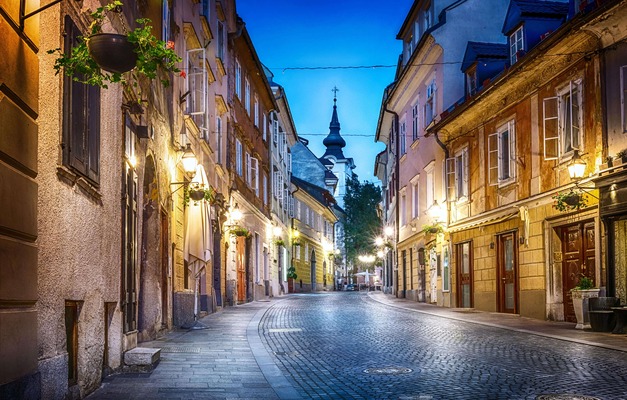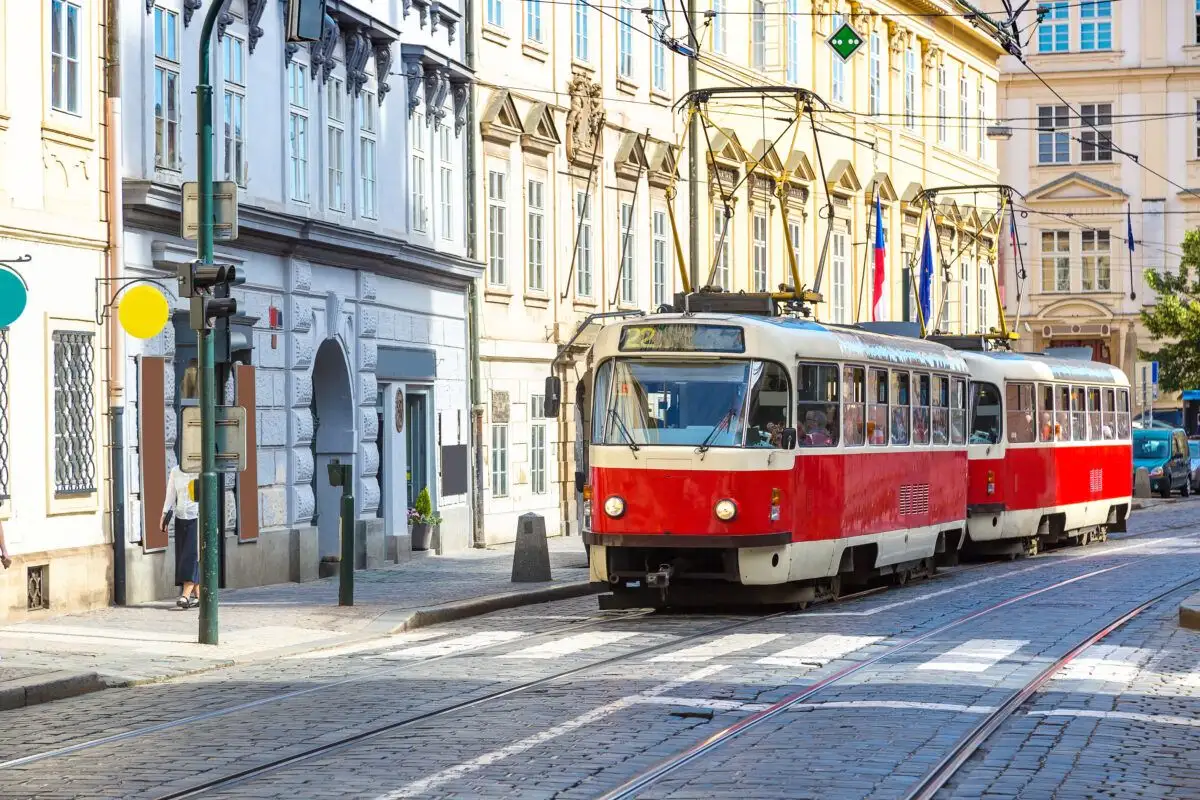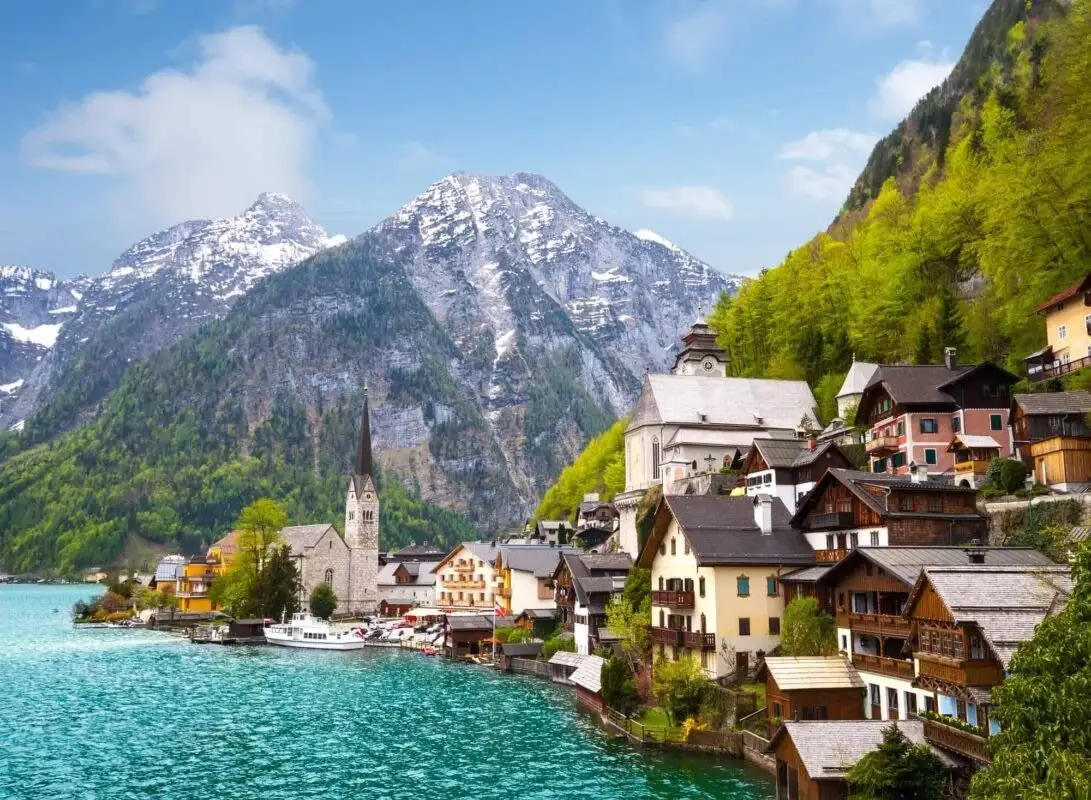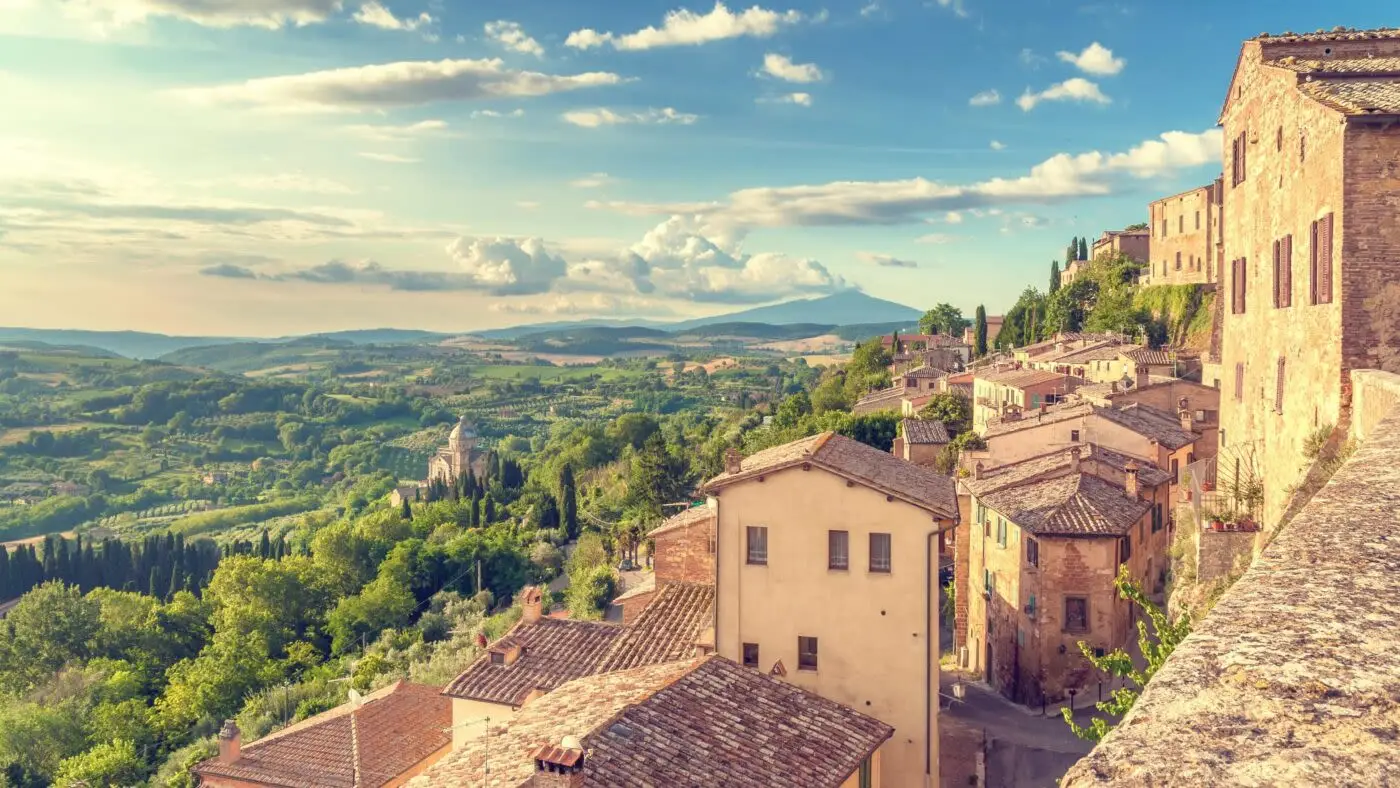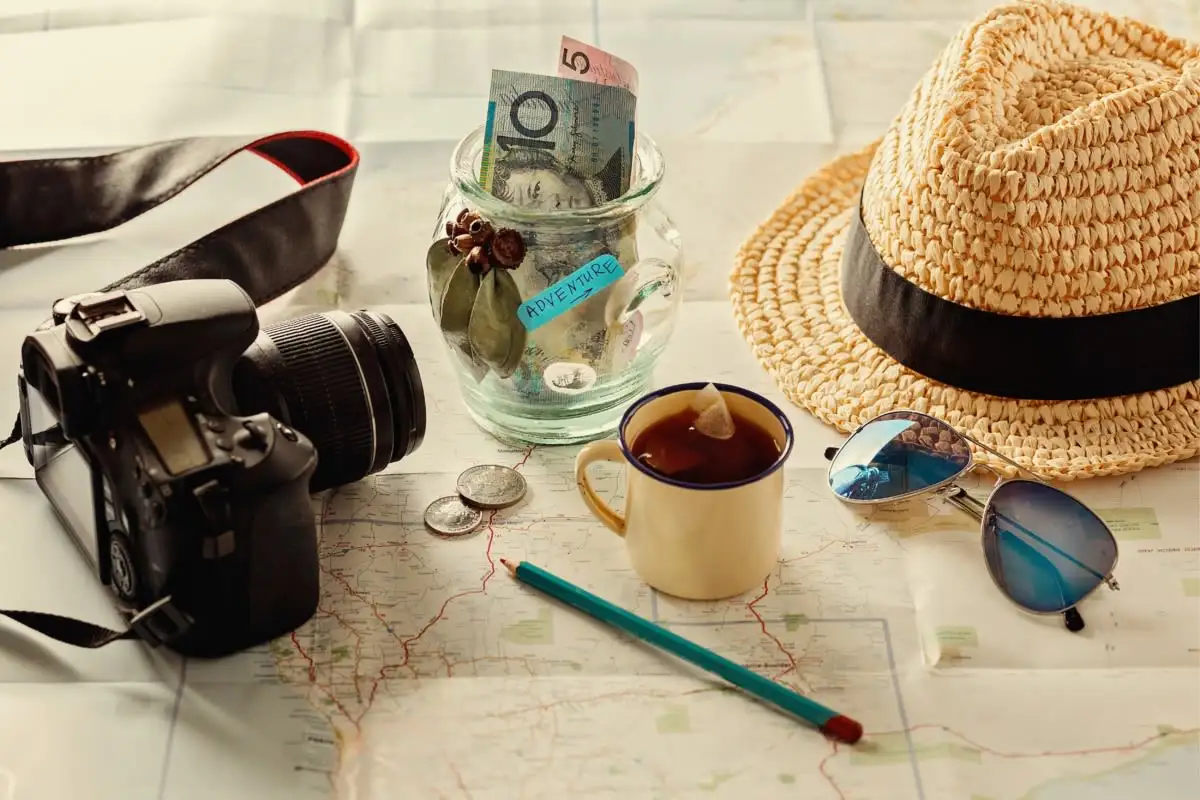
A Rennaissance Frame of Mind: 7 Days in Florence and the Tuscan Countryside
 7 Day Tour of Florence
7 Day Tour of Florence
Overview
Trip Map
Itinerary
Inclusions
Reviews


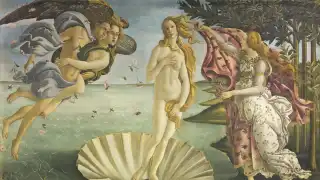




7 Days 6 Nights
Best Time: Jan-Dec
Local Cuisine & Wine
History Buffs
In this 7-day tour of Tuscany and beyond, prepare yourself for an esthetic experience like nowhere else. While you stay in Florence, meet Michelangelo's "David" and countless other masterpieces before eating with a local guide in the Santa Croce neighborhood. Travel to San Gimignano and take time for a wine tasting of its Vernaccia. In Siena, marvel at the sublime Piazza del Campo and the Palazzo Publico to learn how Florence's medieval rival lived. Take a day in the food capital, Bologna, before honing your skills with a cooking class back in Florence. After one week with UNESCO Heritage Sites, your mind, and bellies, will be full!
- Ascend the incomparable dome of the Florence Cathedral, to see all the bell towers of the city.
- Admire the medieval towers looking out over the rooftops of San Gimignano.
- Enjoy the Panforte of Siena and other delicacies of this hill-top city.
- Discover the foodie center of Italy in Bologna, and learn how it became that way.
In this 7-day tour of Tuscany and beyond, prepare yourself for an esthetic experience like nowhere else. While you stay in Florence, meet Michelangelo's "David" and countless other masterpieces before eating with a local guide in the Santa Croce neighborhood. Travel to San Gimignano and take time for a wine tasting of its Vernaccia. In Siena, marvel at the sublime Piazza del Campo and the Palazzo Publico to learn how Florence's medieval rival lived. Take a day in the food capital, Bologna, before honing your skills with a cooking class back in Florence. After one week with UNESCO Heritage Sites, your mind, and bellies, will be full!
- Ascend the incomparable dome of the Florence Cathedral, to see all the bell towers of the city.
- Admire the medieval towers looking out over the rooftops of San Gimignano.
- Enjoy the Panforte of Siena and other delicacies of this hill-top city.
- Discover the foodie center of Italy in Bologna, and learn how it became that way.

Piazza del Duomo
Churches & Monasteries

Uffizi Gallery
Museums & Galleries

Ponte Vecchio
Architecture

Galleria dell'Accademia
Museums & Galleries

Piazza Santa Croce
Churches & Monasteries

Piazza Signoria & Bargello
Historic Landmarks

Oltrarno & Piazzale Michelangelo
Cultural
Must see sights

Piazza del Duomo
Churches & Monasteries

Uffizi Gallery
Museums & Galleries

Ponte Vecchio
Architecture

Galleria dell'Accademia
Museums & Galleries

Piazza Santa Croce
Churches & Monasteries

Piazza Signoria & Bargello
Historic Landmarks

Oltrarno & Piazzale Michelangelo
Cultural
Starting from
$1995
per person
 Not included
Not included Secure Your Customizable Trip
Enter your details to embark on a journey that can be tailored just for you.
Start
Travelers
0 travelers
Add Room
Remove Room
Preferred Hotel Stars
Select Hotel Stars
Craft Your Own Itinerary
Select your interests and destinations for a trip plan inspired by you.
A Renaissance Frame of Mind Trip - Map & Itinerary
Enable/Disable Map Scrolling
Click To Make Map Interactive

A Renaissance Frame of Mind Trip Timeline
 Edit Details
Edit DetailsArrival
6 nights
Florence
Italy
Departure
Day-By-Day Itinerary of A Renaissance Frame of Mind Trip

Day 1
Arrive Florence
Day 1
Arrive Florence


To Be Determined
Private Transfer to your Hotel
For your arrival in Florence, we will provide information on the customs and passport procedures. We will schedule a pick up for your flight's arrival time. You will be met in the arrivals hall inside the terminal by a driver holding a sign with your name on it. The transfer is for your party only - you will not be sharing a vehicle. The cost of the ride will be included in your itinerary package and you will be taken directly to your hotel. IMPORTANT NOTE: Please be aware the car service can fit up to 1 checked item of luggage and 1 personal item per person, such as a purse or small backpack. If you think you will have more baggage, please inform your travel consultant as this may result in an additional fee.

Day 1
Arrive Florence


Day 1
Arrive Florence



To Be Determined:
Private Transfer to your Hotel
Afternoon/Late Afternoon:
Piazza del Duomo

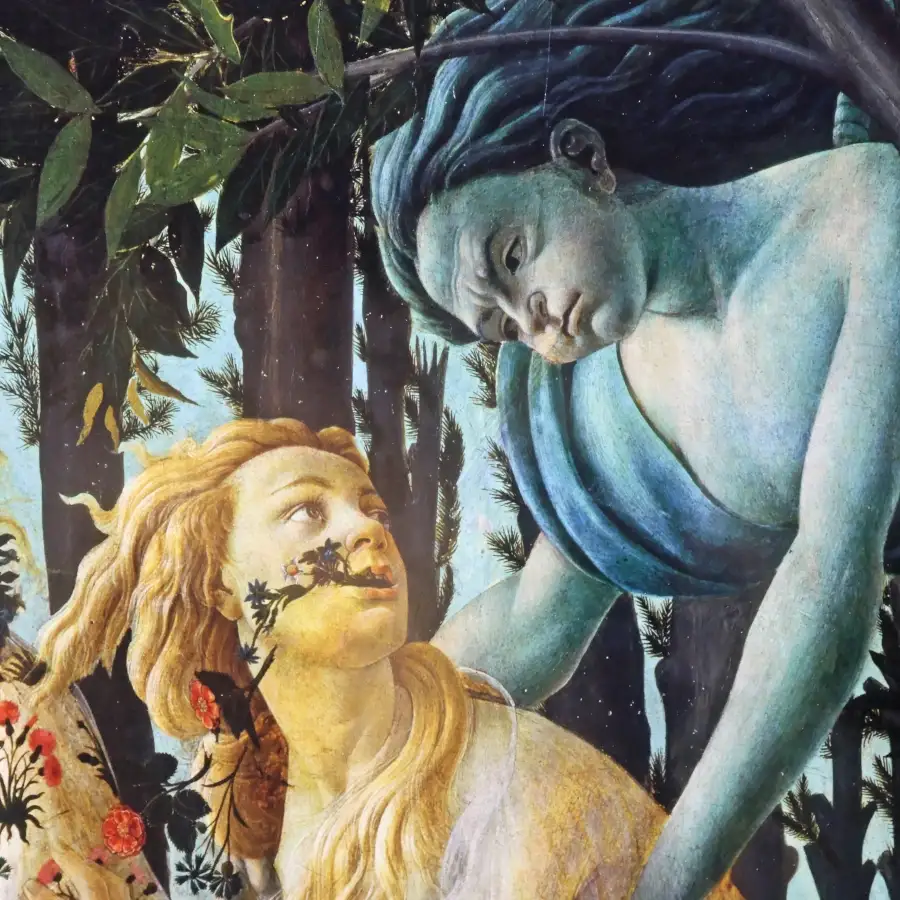
Day 2
Florence
Day 2
Florence


Morning
Uffizi Gallery
As the capital of the Renaissance, it's only fitting that Florence should also host Italy's greatest art gallery at the Uffizi. It's understandably busy throughout the year, but it's nevertheless worth the crowds to see to see some of the most sumptuous masterpieces of Renaissance art, including Botticelli's Primavera and Venus, and works by Michelangelo and Da Vinci. If you're planning to visit other galleries and museums in Florence, then it's definitely worth investing in a Firenze Card, which gives you free entry and priority access to 72 venues in the city. At a minimum, you should book ahead for the Uffizi to avoid very long queues.

Day 2
Florence


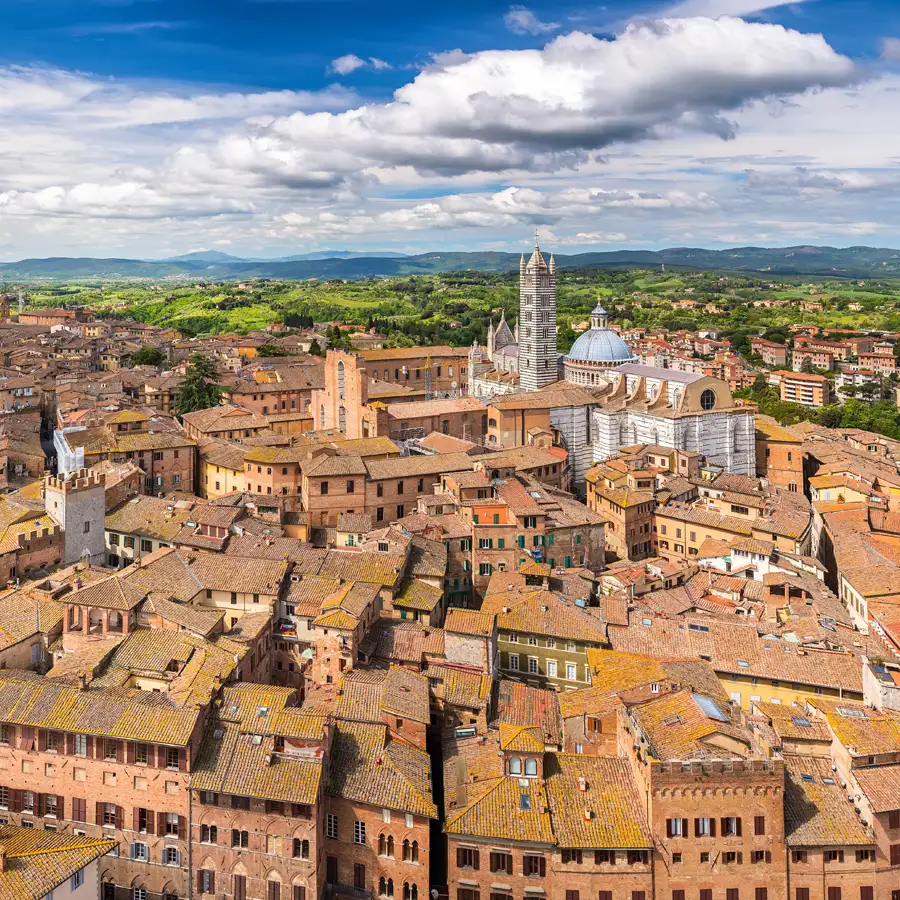
Day 3
Florence
Day 3
Florence


Early Morning to Early Evening
Siena Excursion
For beauty and interest in Tuscany, only Siena comes close to Florence. Only an hour-and-a-half from Florence by train, it makes for a perfect day trip. The mesmerising brick-built medieval town with its narrow streets winding down into the valleys below was once a great regional power which rivaled Florence, and famously defeated the larger town in the legendary Battle of Montaperti. Its main square, the Campo, is one of the most satisfying urban spaces ever built, playing host to the annual Palio horse race in which each of the town's 17 contrade (i.e. city districts) participate. The traffic-free streets have been wonderfully preserved and its great Gothic buildings still exhibit the artistic masterpieces of the Sienese school of painting commissioned for them during the town's heyday in the 14th century.
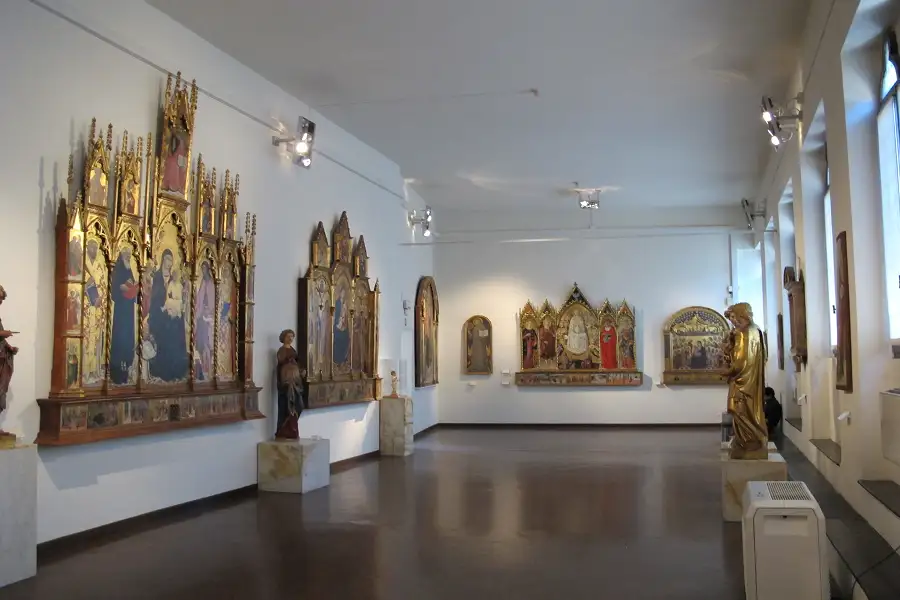
Pinacoteca Nazionale
Make time to visit this gallery holding precious art and history from the Gothic era, when Siena's power and influence peaked.
Show More
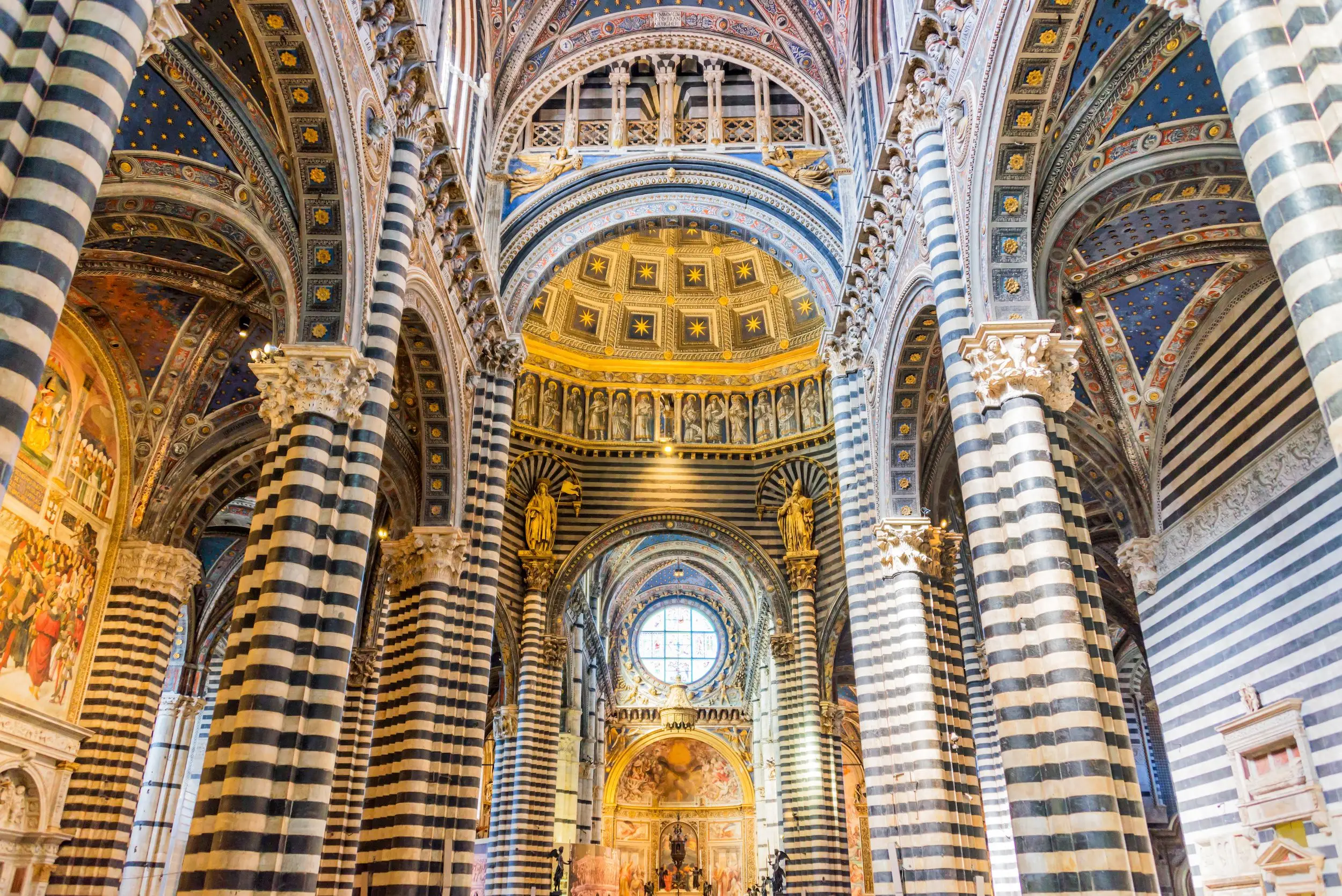
Duomo di Siena
Experience a riot of the senses as you walk into one of Tuscany's most colorful and remarkable cathedrals.
Show More
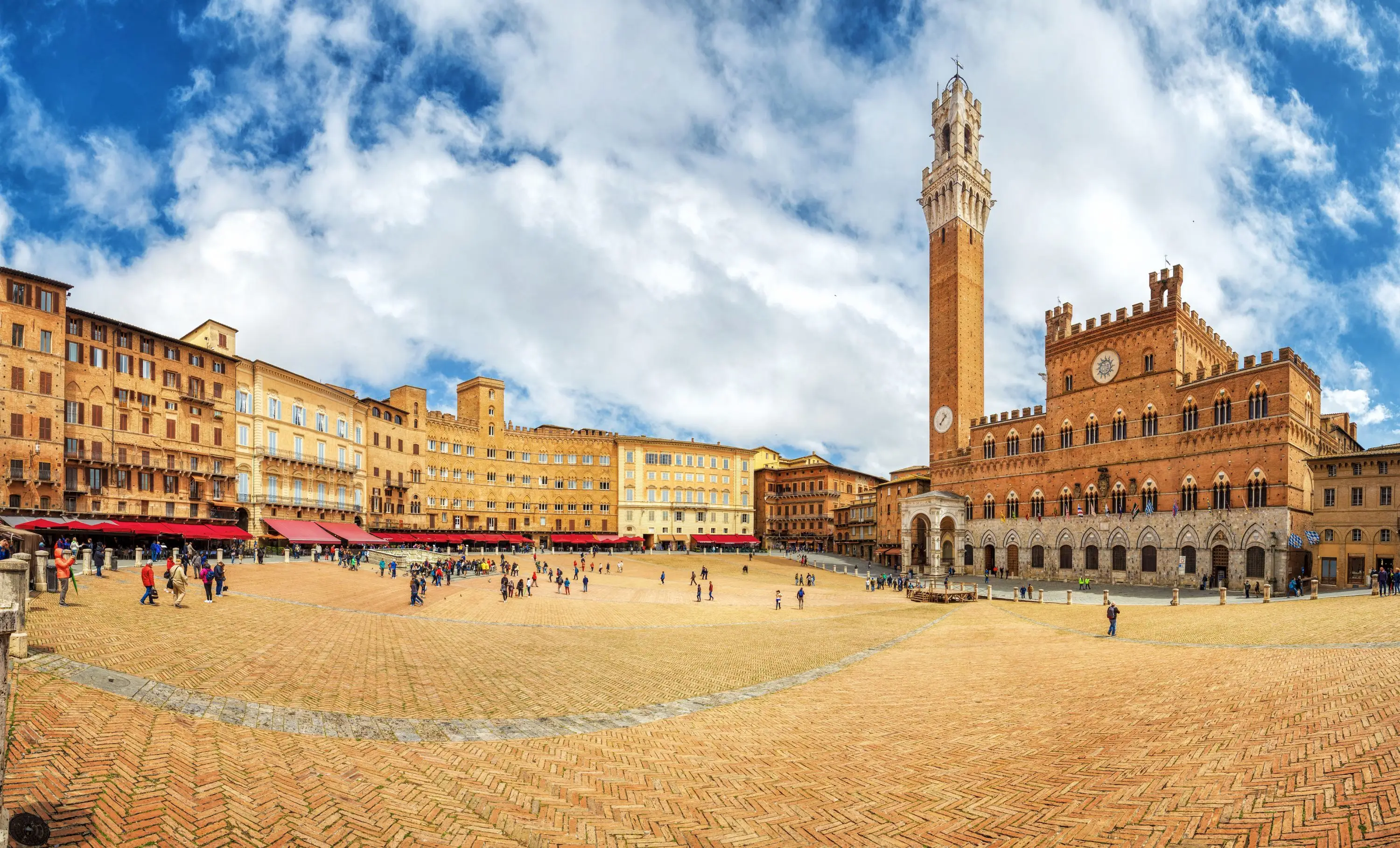
Piazza del Campo
Stop and linger in one of the more glorious and satisfying urban spaces ever built.
Show More
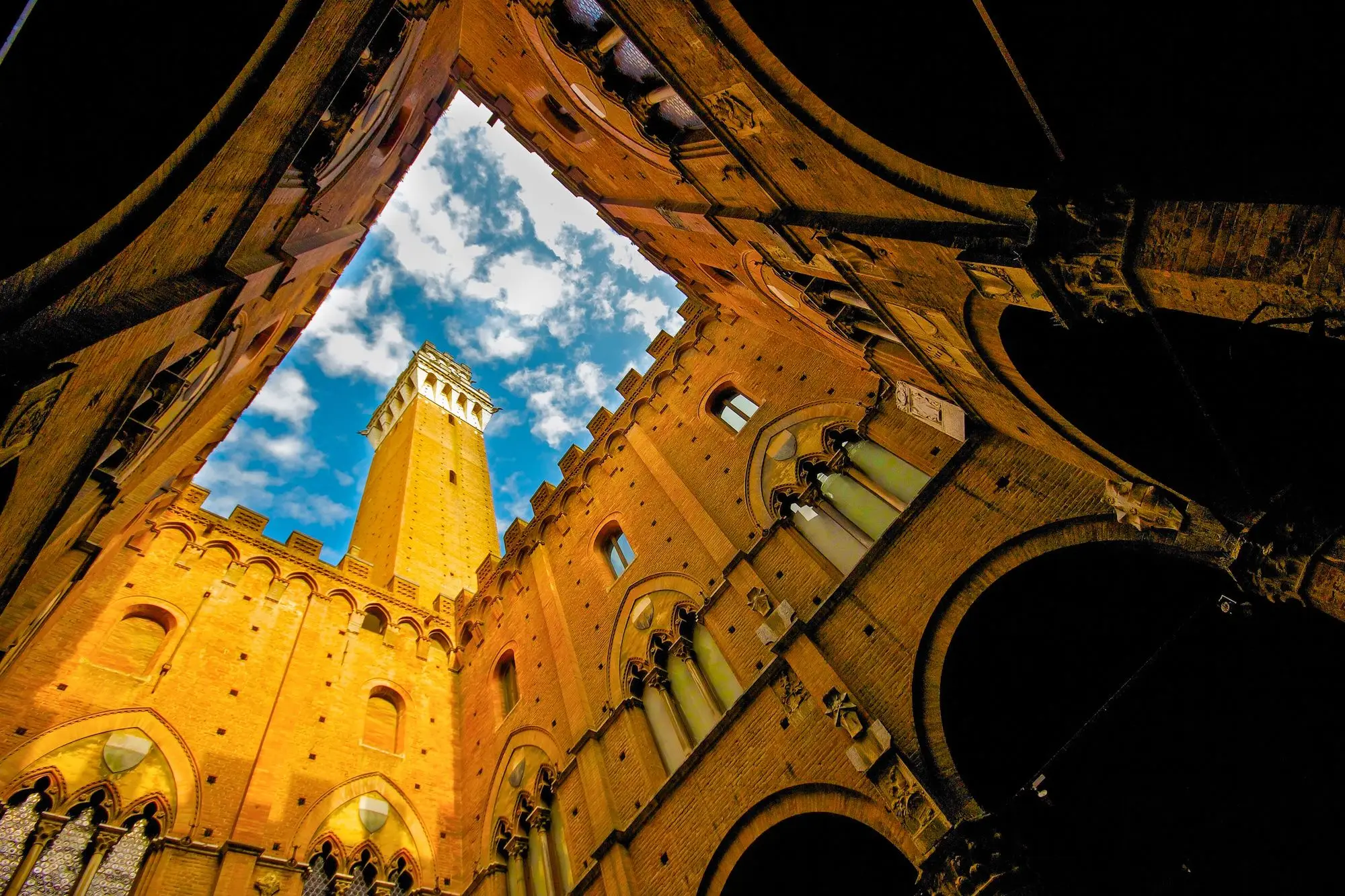
Palazzo Pubblico and Museo Civico
Make your way into the courtyard of this brick palace built in the 13th century and enter the Museo Civico, where you will marvel at the beautiful murals which adorn the interiors.
Show More

Pinacoteca Nazionale
Make time to visit this gallery holding precious art and history from the Gothic era, when Siena's power and influence peaked.
Show More

Duomo di Siena
Experience a riot of the senses as you walk into one of Tuscany's most colorful and remarkable cathedrals.
Show More

Piazza del Campo
Stop and linger in one of the more glorious and satisfying urban spaces ever built.
Show More

Palazzo Pubblico and Museo Civico
Make your way into the courtyard of this brick palace built in the 13th century and enter the Museo Civico, where you will marvel at the beautiful murals which adorn the interiors.
Show More
prev
next

Day 3
Florence


Pinacoteca Nazionale
 Highlight of Siena Excursion
Highlight of Siena ExcursionMake time to visit this gallery holding precious art and history from the Gothic era, when Siena's power and influence peaked.
This is the main state art museum of the city and includes a rich collection of masterpieces from the famous Sienese school of artists, which created mainly large, majestic altarpieces with golden decorations. The "gold" background paintings include a piece by Master of Tressa which marks the beginning of the golden age of Sienese painting.

Duomo di Siena
 Highlight of Siena Excursion
Highlight of Siena ExcursionExperience a riot of the senses as you walk into one of Tuscany's most colorful and remarkable cathedrals.
Siena's Duomo is a fabulous conglomeration of Romanesque and Gothic architecture, delineated by encircling bands of black and white marble. It is the earliest of all the great Tuscan cathedrals, having been mostly completed by 1263. Before you enter, take a moment to admire the marble facade and its remarkable statuary. Once inside, you can invest in the audio guide to get the most out of a visit. The standout artistic treasure is the pulpit with columns resting on the backs of alternating lions and lionesses. The Piccolomini Library was added on to the cathedral in 1495 by the future Pope Pius III, and is one of the loveliest rooms in all Italy thanks to its cycle of crystal-sharp, brilliantly colorful frescoes.

Piazza del Campo
 Highlight of Siena Excursion
Highlight of Siena ExcursionStop and linger in one of the more glorious and satisfying urban spaces ever built.
With its remarkable fan shape and gentle slope, the Piazza del Campo is one of the more memorable and unique public squares in Europe. It has been heart of Siena since the mid-12th century when it was built on the site of a Roman marketplace. Cafes line the square offering coffee and aperitivo for the young and old alike who relax and take in the scene. The piazza is made doubly famous by the fact that it hosts the annual Palio horse race, a hotly-contested event which splits the city into competing factions.

Palazzo Pubblico and Museo Civico
 Highlight of Siena Excursion
Highlight of Siena ExcursionMake your way into the courtyard of this brick palace built in the 13th century and enter the Museo Civico, where you will marvel at the beautiful murals which adorn the interiors.
Dominating the Piazza del Campo, this 13th century palace and tower was built as a symbol of the independence and wealth of Siena by the Government of Nine (Governo dei Nove) - nine representatives of the people elected by the merchant class, not noble families. Looking at its façade from the Piazza del Campo, it's possible to immediately see its different periods of construction: on the lower level of the three-mullioned (triple-arched) windows the stone that was used and then later brick. The 400 steps to the top of the palace tower is no easy feat even for the fittest of travelers, but the view over the city and Piazza del Campo below make the narrow ascent worth it. Inside the palace courtyard you will find the entrance to the Museo Civico, a treasure trove of magnificent works of art which can be seen inside the palace. One of the most beautiful rooms in the palace is the Sala dei Nove, the Hall of the Nine, with the Allegories of Good and Bad Government by Ambrogio Lorenzetti where you can see the medieval city with its workshops and artisans.

Pinacoteca Nazionale
 Highlight of Siena Excursion
Highlight of Siena ExcursionMake time to visit this gallery holding precious art and history from the Gothic era, when Siena's power and influence peaked.
This is the main state art museum of the city and includes a rich collection of masterpieces from the famous Sienese school of artists, which created mainly large, majestic altarpieces with golden decorations. The "gold" background paintings include a piece by Master of Tressa which marks the beginning of the golden age of Sienese painting.

Duomo di Siena
 Highlight of Siena Excursion
Highlight of Siena ExcursionExperience a riot of the senses as you walk into one of Tuscany's most colorful and remarkable cathedrals.
Siena's Duomo is a fabulous conglomeration of Romanesque and Gothic architecture, delineated by encircling bands of black and white marble. It is the earliest of all the great Tuscan cathedrals, having been mostly completed by 1263. Before you enter, take a moment to admire the marble facade and its remarkable statuary. Once inside, you can invest in the audio guide to get the most out of a visit. The standout artistic treasure is the pulpit with columns resting on the backs of alternating lions and lionesses. The Piccolomini Library was added on to the cathedral in 1495 by the future Pope Pius III, and is one of the loveliest rooms in all Italy thanks to its cycle of crystal-sharp, brilliantly colorful frescoes.

Piazza del Campo
 Highlight of Siena Excursion
Highlight of Siena ExcursionStop and linger in one of the more glorious and satisfying urban spaces ever built.
With its remarkable fan shape and gentle slope, the Piazza del Campo is one of the more memorable and unique public squares in Europe. It has been heart of Siena since the mid-12th century when it was built on the site of a Roman marketplace. Cafes line the square offering coffee and aperitivo for the young and old alike who relax and take in the scene. The piazza is made doubly famous by the fact that it hosts the annual Palio horse race, a hotly-contested event which splits the city into competing factions.

Palazzo Pubblico and Museo Civico
 Highlight of Siena Excursion
Highlight of Siena ExcursionMake your way into the courtyard of this brick palace built in the 13th century and enter the Museo Civico, where you will marvel at the beautiful murals which adorn the interiors.
Dominating the Piazza del Campo, this 13th century palace and tower was built as a symbol of the independence and wealth of Siena by the Government of Nine (Governo dei Nove) - nine representatives of the people elected by the merchant class, not noble families. Looking at its façade from the Piazza del Campo, it's possible to immediately see its different periods of construction: on the lower level of the three-mullioned (triple-arched) windows the stone that was used and then later brick. The 400 steps to the top of the palace tower is no easy feat even for the fittest of travelers, but the view over the city and Piazza del Campo below make the narrow ascent worth it. Inside the palace courtyard you will find the entrance to the Museo Civico, a treasure trove of magnificent works of art which can be seen inside the palace. One of the most beautiful rooms in the palace is the Sala dei Nove, the Hall of the Nine, with the Allegories of Good and Bad Government by Ambrogio Lorenzetti where you can see the medieval city with its workshops and artisans.
prev
next


Day 4
Florence
Day 4
Florence



Morning
Oltrarno
Meaning literally "the other side of the Arno", Oltrarno is often the forgotten side of Florence, with tourists generally more focused on central Florence, but sometimes it's also worth venturing off the tourist trail! Oltrarno is one of Florence's most popular and trendiest neighborhoods and offers visitors a trove of cultural treasures. Just a short walk from the Ponte Vecchio brings you to the heart of this thriving neighborhood which is host to beautiful gardens and artistic churches. You'll also find the most famous viewpoint in the city - Piazzale Michelangelo.

Santa Maria del Carmine & Brancacci Chapel
Stand beneath the magnificent 14th century frescoes, still intensely radiant six centuries after they were first painted.
Show More
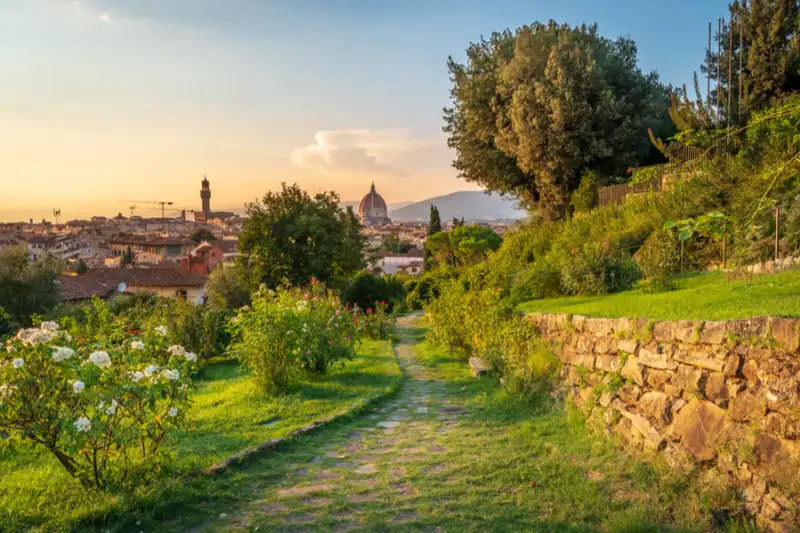
Giardino delle Rose
Look down upon Florence from amidst the rose bushes.
Show More
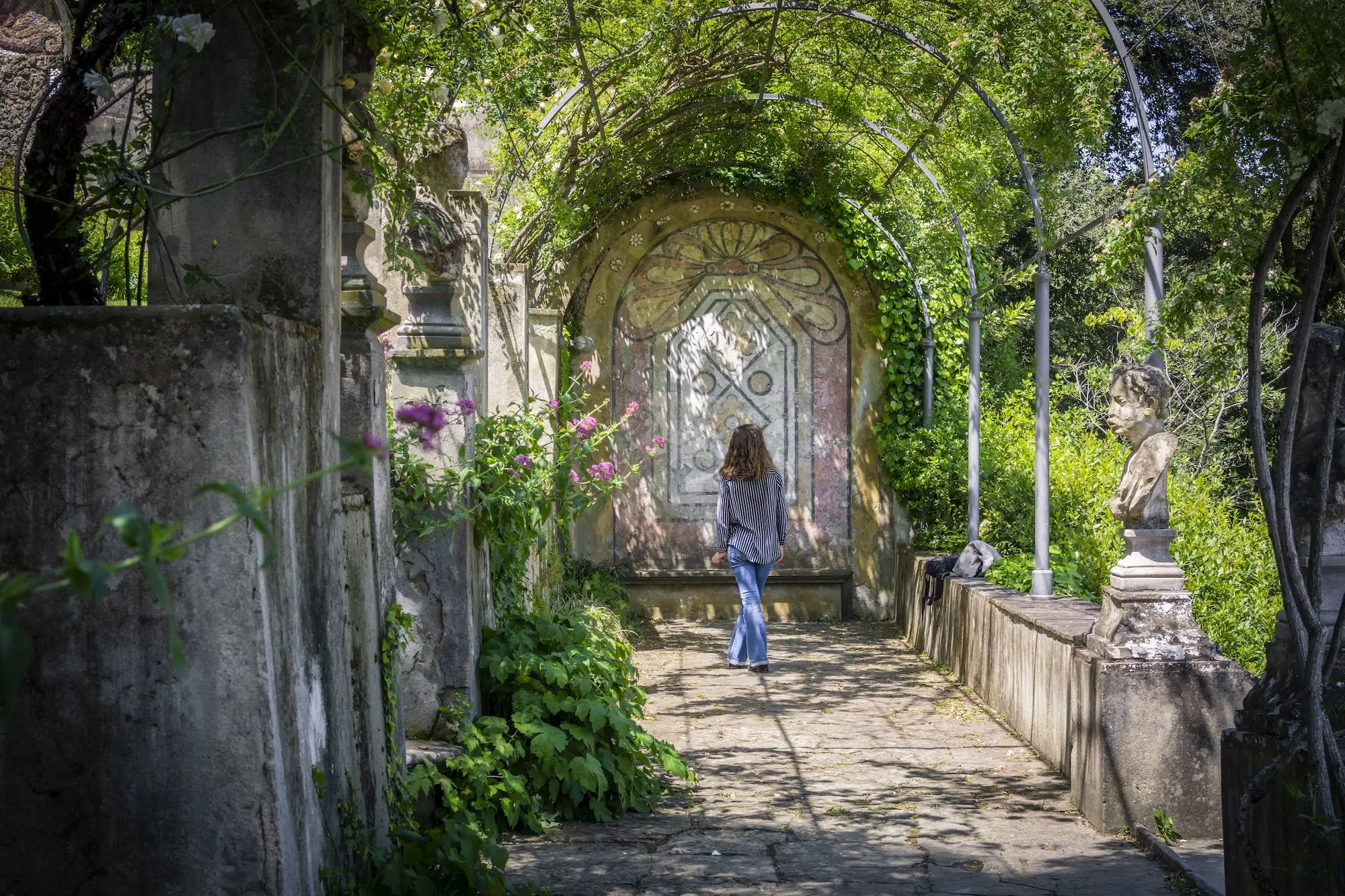
Villa Bardini
Wander beneath the wisteria whilst gazing down upon the roofs of Florence.
Show More

Piazzale Michelangelo
Create an unforgettable memory and see Florence from above.
Show More
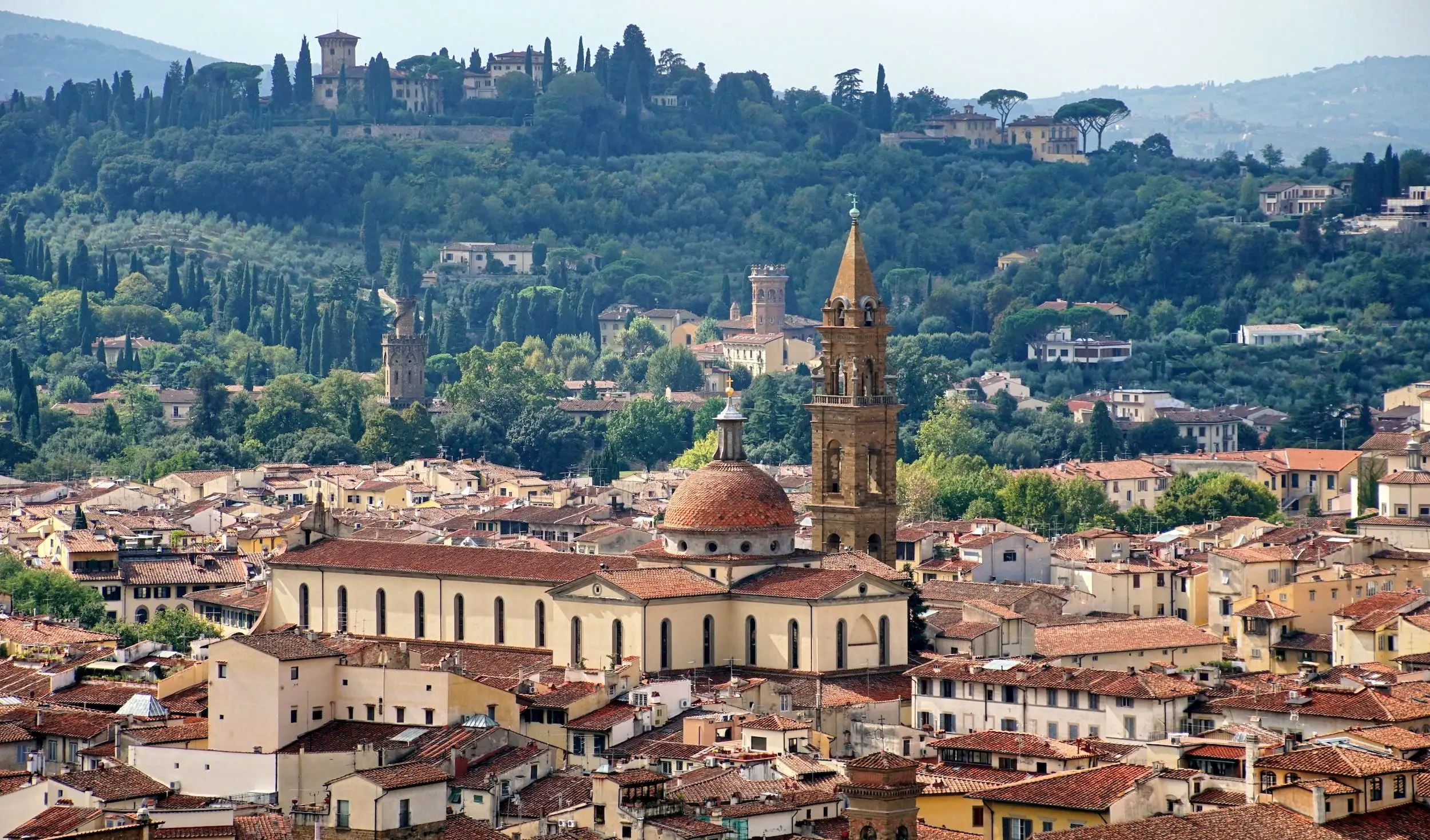
Basilica di Santo Spirito
Visit a Renaissance church where Michelango once found refuge.
Show More

Santa Maria del Carmine & Brancacci Chapel
Stand beneath the magnificent 14th century frescoes, still intensely radiant six centuries after they were first painted.
Show More

Giardino delle Rose
Look down upon Florence from amidst the rose bushes.
Show More

Villa Bardini
Wander beneath the wisteria whilst gazing down upon the roofs of Florence.
Show More

Piazzale Michelangelo
Create an unforgettable memory and see Florence from above.
Show More

Basilica di Santo Spirito
Visit a Renaissance church where Michelango once found refuge.
Show More

Santa Maria del Carmine & Brancacci Chapel
Stand beneath the magnificent 14th century frescoes, still intensely radiant six centuries after they were first painted.
Show More
prev
next

Day 4
Florence


Santa Maria del Carmine & Brancacci Chapel
 Highlight of Oltrarno
Highlight of OltrarnoStand beneath the magnificent 14th century frescoes, still intensely radiant six centuries after they were first painted.
Dating back to the 13th century, a fire in the 18th century practically destroyed the church, but spared its magnificent Renaissance frescoes in the Brancacci Chapel – a treasure trove of paintings from the 1400's by Masolino da Panicale, Masaccio, and Filippino Lippi. After years of accumulated candle soot and mold, the frescoes which have been fully restored and have an intense radiance, making it possible to see very clearly the shifts in emphasis between the artists' work. The Brancacci Chapel entrance is to the right of the main church entrance. Only 30 people can visit at a time.

Giardino delle Rose
 Highlight of Oltrarno
Highlight of OltrarnoLook down upon Florence from amidst the rose bushes.
The Giardino delle Rose (Rose Garden) and the nearby Giardino dell'Iris (Iris Garden) are two free public gardens on either side of Piazzale Michelangelo. They are perfect for flower-lovers or anyone who wants to wander in a peaceful green space, free from the nearby crowds. You'll even find a Japanese garden and sculptures by the artist Folon.

Villa Bardini
 Highlight of Oltrarno
Highlight of OltrarnoWander beneath the wisteria whilst gazing down upon the roofs of Florence.
Less crowded than the nearby Boboli Gardens, the Bardini Villa is a splendid Italianate Garden which enjoys panoramic views of the city. Wisteria covered pergola allow visitors to walk through tunnels of green while enjoying romantic views of the city and surroundings. Within the 17th century villa itself, you will find artworks by the painter Pietro Annigoni.

Piazzale Michelangelo
 Highlight of Oltrarno
Highlight of OltrarnoCreate an unforgettable memory and see Florence from above.
No matter what time of day or weather, you will find that Piazzale Michelangelo truly offers a stupendous lookout over Florence. Not just a perfect photo opportunity, but a moment of wonder. You are looking at the city that gave birth to incredible artists, amazing scientists and an enthralling history of discovery and power that has filled novels and movie theaters. Many mistakenly believe that this piazza has existed since the birth of Florence or that it was designed by Michelangelo. Actually, it is a rather recent addition to the list of great monuments in Florence, created in 1869 by Florentine architect Giuseppe Poggi, as part of a major restructuring of the city walls in 1869. In 1873, a copy of Michelangelo's David was taken to the square with the help of nine pairs of oxen. This monument occupies a privileged position, observing the city from above as a guard attentive to all the beauties that the city of Florence offers.

Basilica di Santo Spirito
 Highlight of Oltrarno
Highlight of OltrarnoVisit a Renaissance church where Michelango once found refuge.
Usually referred to simply as Santo Spirito, this unassuming basilica is one of the main examples of early Renaissance architecture in Florence. Compared to other churches found on the north side of the river, the Basilica di Santo Spirito is very often ignored by tourists, despite offering some serious history and a wonderful interior. Notable pieces of artwork inside the church include its thirty-eight altars, almost all with painted altarpieces. The best have been cleaned and are almost all in the transept and behind the Baldacchino, this being where the most prestigious local families could afford to have chapels. Michelangelo found refuge in the convent of Santo Spirito in 1492 at the age of seventeen and it was within the walls of the convent that the curious artist had the opportunity to analyze corpses from the adjoining hospital to study the anatomy of the human body. As a form of thank-you, Michelangelo carved a highly realistic wooden crucifix which can now be found within the sacristy to the left as you enter the church.

Santa Maria del Carmine & Brancacci Chapel
 Highlight of Oltrarno
Highlight of OltrarnoStand beneath the magnificent 14th century frescoes, still intensely radiant six centuries after they were first painted.
Dating back to the 13th century, a fire in the 18th century practically destroyed the church, but spared its magnificent Renaissance frescoes in the Brancacci Chapel – a treasure trove of paintings from the 1400's by Masolino da Panicale, Masaccio, and Filippino Lippi. After years of accumulated candle soot and mold, the frescoes which have been fully restored and have an intense radiance, making it possible to see very clearly the shifts in emphasis between the artists' work. The Brancacci Chapel entrance is to the right of the main church entrance. Only 30 people can visit at a time.

Giardino delle Rose
 Highlight of Oltrarno
Highlight of OltrarnoLook down upon Florence from amidst the rose bushes.
The Giardino delle Rose (Rose Garden) and the nearby Giardino dell'Iris (Iris Garden) are two free public gardens on either side of Piazzale Michelangelo. They are perfect for flower-lovers or anyone who wants to wander in a peaceful green space, free from the nearby crowds. You'll even find a Japanese garden and sculptures by the artist Folon.

Villa Bardini
 Highlight of Oltrarno
Highlight of OltrarnoWander beneath the wisteria whilst gazing down upon the roofs of Florence.
Less crowded than the nearby Boboli Gardens, the Bardini Villa is a splendid Italianate Garden which enjoys panoramic views of the city. Wisteria covered pergola allow visitors to walk through tunnels of green while enjoying romantic views of the city and surroundings. Within the 17th century villa itself, you will find artworks by the painter Pietro Annigoni.

Piazzale Michelangelo
 Highlight of Oltrarno
Highlight of OltrarnoCreate an unforgettable memory and see Florence from above.
No matter what time of day or weather, you will find that Piazzale Michelangelo truly offers a stupendous lookout over Florence. Not just a perfect photo opportunity, but a moment of wonder. You are looking at the city that gave birth to incredible artists, amazing scientists and an enthralling history of discovery and power that has filled novels and movie theaters. Many mistakenly believe that this piazza has existed since the birth of Florence or that it was designed by Michelangelo. Actually, it is a rather recent addition to the list of great monuments in Florence, created in 1869 by Florentine architect Giuseppe Poggi, as part of a major restructuring of the city walls in 1869. In 1873, a copy of Michelangelo's David was taken to the square with the help of nine pairs of oxen. This monument occupies a privileged position, observing the city from above as a guard attentive to all the beauties that the city of Florence offers.

Basilica di Santo Spirito
 Highlight of Oltrarno
Highlight of OltrarnoVisit a Renaissance church where Michelango once found refuge.
Usually referred to simply as Santo Spirito, this unassuming basilica is one of the main examples of early Renaissance architecture in Florence. Compared to other churches found on the north side of the river, the Basilica di Santo Spirito is very often ignored by tourists, despite offering some serious history and a wonderful interior. Notable pieces of artwork inside the church include its thirty-eight altars, almost all with painted altarpieces. The best have been cleaned and are almost all in the transept and behind the Baldacchino, this being where the most prestigious local families could afford to have chapels. Michelangelo found refuge in the convent of Santo Spirito in 1492 at the age of seventeen and it was within the walls of the convent that the curious artist had the opportunity to analyze corpses from the adjoining hospital to study the anatomy of the human body. As a form of thank-you, Michelangelo carved a highly realistic wooden crucifix which can now be found within the sacristy to the left as you enter the church.

Santa Maria del Carmine & Brancacci Chapel
 Highlight of Oltrarno
Highlight of OltrarnoStand beneath the magnificent 14th century frescoes, still intensely radiant six centuries after they were first painted.
Dating back to the 13th century, a fire in the 18th century practically destroyed the church, but spared its magnificent Renaissance frescoes in the Brancacci Chapel – a treasure trove of paintings from the 1400's by Masolino da Panicale, Masaccio, and Filippino Lippi. After years of accumulated candle soot and mold, the frescoes which have been fully restored and have an intense radiance, making it possible to see very clearly the shifts in emphasis between the artists' work. The Brancacci Chapel entrance is to the right of the main church entrance. Only 30 people can visit at a time.
prev
next


Day 5
Florence
Day 5
Florence


Morning to Early Evening
Bologna Excursion
Located only a short train ride away, this off-the-tourist-radar city is one of Italy's best surprises. Apart from being the source of the inexpensive deli meat and the spaghetti dish, Bologna is probably best known as the home of the oldest university in the world. Its historic center contains two medieval towers that lean similarly to the tower in Pisa, one of which is still accessible and provides amazing views of the city. The main basilica, old town hall and other structures around the old town are equally awe-inspiring. The city is also rightly famous for its over 25 miles (40km) of covered walkways, which serve as the open-air salons of the city. That includes the longest portico in the world. At nearly 4 kilometers (2.5m) in length and with 666 arches, the Portico di San Luca leads up to the Sanctuary of the Madonna of San Luca, where you can enjoy another great view of the city, as well as of the surrounding countryside.
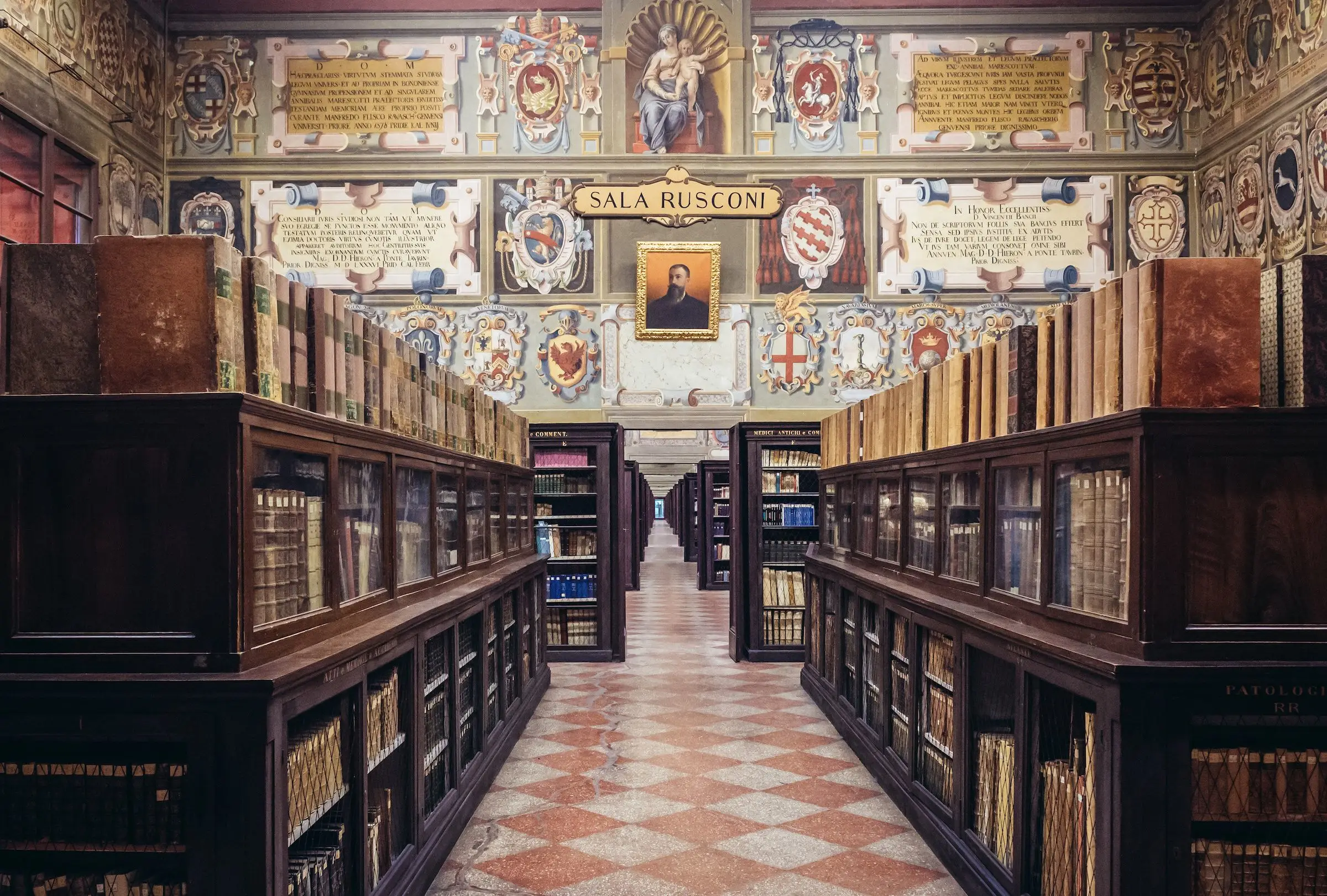
Archiginnasio
Visit one of the oldest university buildings in the world and admire its incredible library.
Show More
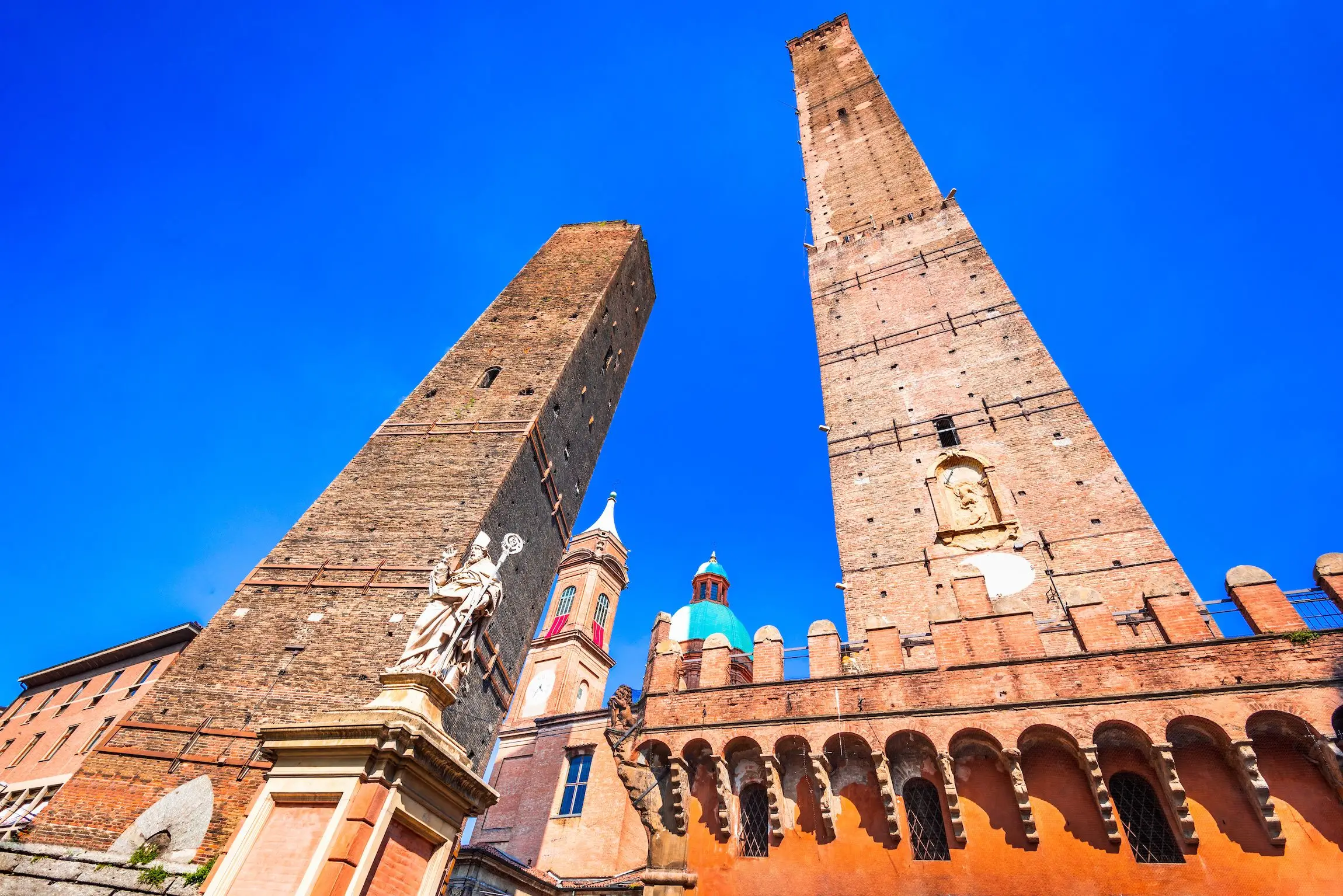
Two Towers
Climb to the top of the Asinelli Tower for great vistas over the city of Bologna below.
Show More
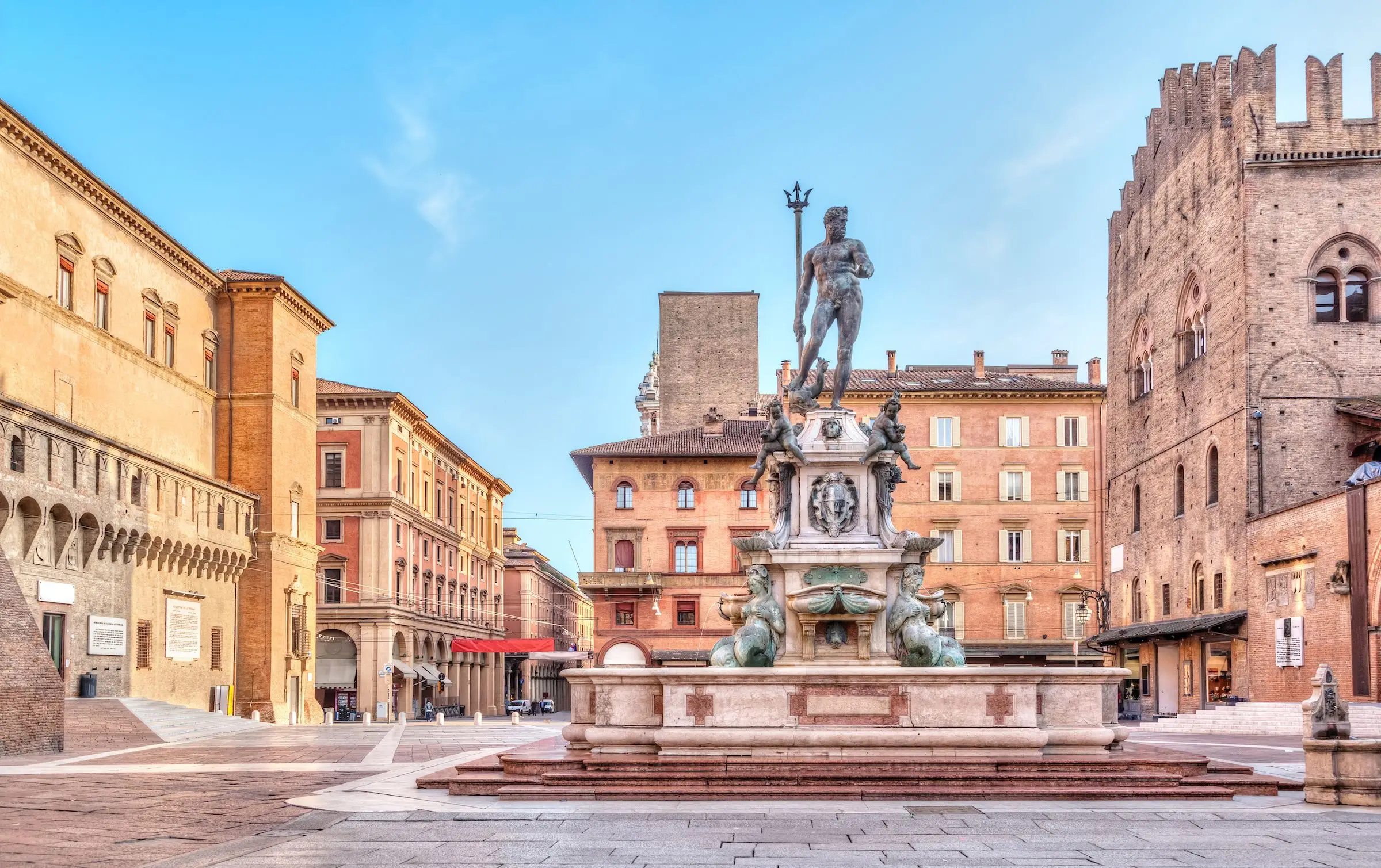
Fountain of Neptune
Admire this monumental restored marble & bronze fountain in the heart of Piazza del Nettuno.
Show More

Archiginnasio
Visit one of the oldest university buildings in the world and admire its incredible library.
Show More

Two Towers
Climb to the top of the Asinelli Tower for great vistas over the city of Bologna below.
Show More

Fountain of Neptune
Admire this monumental restored marble & bronze fountain in the heart of Piazza del Nettuno.
Show More

Archiginnasio
Visit one of the oldest university buildings in the world and admire its incredible library.
Show More
prev
next

Day 5
Florence


Archiginnasio
 Highlight of Bologna Excursion
Highlight of Bologna ExcursionVisit one of the oldest university buildings in the world and admire its incredible library.
Bologna's University is amongst one of the oldest in the world. The Archiginnasio (Greek for “first school”), was built in 1563 and was once the ancient seat of the University of Bologna, established as a school of Law and Arts. It houses one of the most incredible libraries in Italy, containing over one million pieces. Its anatomical theatre is by far the highlight, a place where corpses were dissected for the first scientific studies of the human body.

Two Towers
 Highlight of Bologna Excursion
Highlight of Bologna ExcursionClimb to the top of the Asinelli Tower for great vistas over the city of Bologna below.
Symbols of the city and its most popular and notable landmarks, the two towers (Due Torri) are sat in the heart of the city. They were built during the Middle Ages as noble and wealthy families competed against each other for dominance over Bologna's politics, a competition that often become violent. There was once 180 towers, but these are the only two that remain. At 319 feet (97m), The Torre degli Asinelli is the tallest leaning medieval tower in the world and the only one open to the public. Ascend the 498 steps for a panoramic view of the city.

Fountain of Neptune
 Highlight of Bologna Excursion
Highlight of Bologna ExcursionAdmire this monumental restored marble & bronze fountain in the heart of Piazza del Nettuno.
Commissioned by Pope Pius IV, the Fountain of Neptune is one of Bologna's most famous landmarks and a popular meeting point. He was originally destined for the larger Piazza Maggiore but instead, he sits proudly on the Piazza del Nettuno as a symbol of the city. Standing at almost thirteen feet (4m) high and weighing in at nearly 5000 lbs (2,200 kg), the fountain is hard to miss.

Archiginnasio
 Highlight of Bologna Excursion
Highlight of Bologna ExcursionVisit one of the oldest university buildings in the world and admire its incredible library.
Bologna's University is amongst one of the oldest in the world. The Archiginnasio (Greek for “first school”), was built in 1563 and was once the ancient seat of the University of Bologna, established as a school of Law and Arts. It houses one of the most incredible libraries in Italy, containing over one million pieces. Its anatomical theatre is by far the highlight, a place where corpses were dissected for the first scientific studies of the human body.

Two Towers
 Highlight of Bologna Excursion
Highlight of Bologna ExcursionClimb to the top of the Asinelli Tower for great vistas over the city of Bologna below.
Symbols of the city and its most popular and notable landmarks, the two towers (Due Torri) are sat in the heart of the city. They were built during the Middle Ages as noble and wealthy families competed against each other for dominance over Bologna's politics, a competition that often become violent. There was once 180 towers, but these are the only two that remain. At 319 feet (97m), The Torre degli Asinelli is the tallest leaning medieval tower in the world and the only one open to the public. Ascend the 498 steps for a panoramic view of the city.

Fountain of Neptune
 Highlight of Bologna Excursion
Highlight of Bologna ExcursionAdmire this monumental restored marble & bronze fountain in the heart of Piazza del Nettuno.
Commissioned by Pope Pius IV, the Fountain of Neptune is one of Bologna's most famous landmarks and a popular meeting point. He was originally destined for the larger Piazza Maggiore but instead, he sits proudly on the Piazza del Nettuno as a symbol of the city. Standing at almost thirteen feet (4m) high and weighing in at nearly 5000 lbs (2,200 kg), the fountain is hard to miss.

Archiginnasio
 Highlight of Bologna Excursion
Highlight of Bologna ExcursionVisit one of the oldest university buildings in the world and admire its incredible library.
Bologna's University is amongst one of the oldest in the world. The Archiginnasio (Greek for “first school”), was built in 1563 and was once the ancient seat of the University of Bologna, established as a school of Law and Arts. It houses one of the most incredible libraries in Italy, containing over one million pieces. Its anatomical theatre is by far the highlight, a place where corpses were dissected for the first scientific studies of the human body.
prev
next


Day 6
Florence
Day 6
Florence


10:00 AM - 2:00 PM
Cooking Class
Tuscany is blessed with the perfect climate and location for food, producing a diverse bounty of fresh fruits and vegetables, wild game, beef & pork, and seafood. In fact, when you consider the quality of ingredients produced here, you understand why Tuscan cooking is not just about recipes, but about bringing out the best of the ingredients. Even within Italy, Tuscany is renowned for its cuisine. Taking a cooking class can introduce you to the magic, teaching you how to make traditional Tuscan starters, pastas, main courses, and deserts.

Day 6
Florence


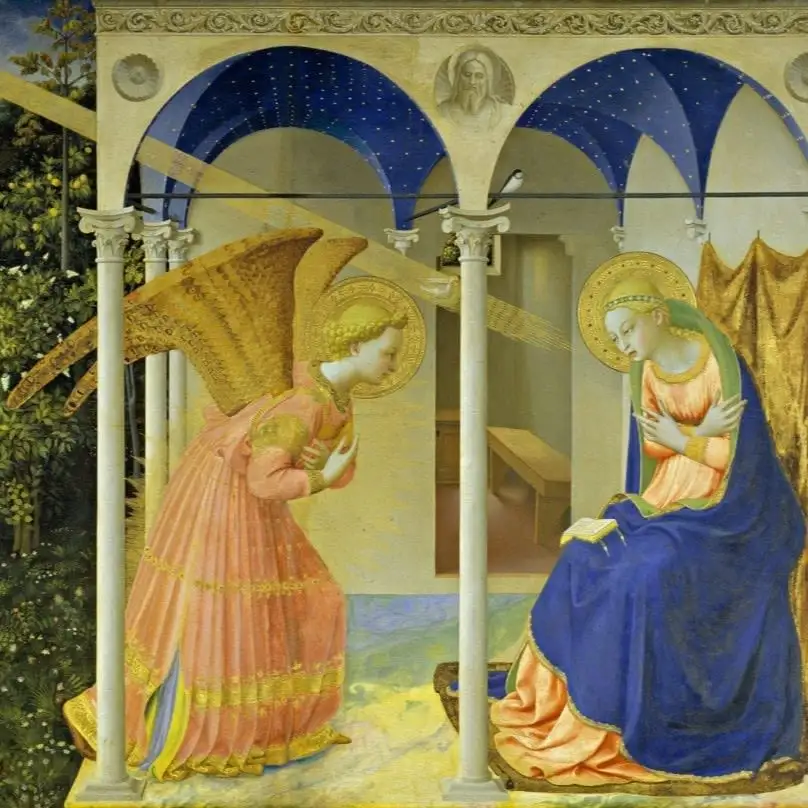
Day 7
Depart Florence
Day 7
Depart Florence


Morning
San Marco Museum
The devil, they say, is in the details, but so are the better angels. Case in point, the faces of Fra Angelico's cherubs and saints (and sinners) at his former friary, the Museum of San Marco. An inspiration to the later giants of the Renaissance, Fra Angelico mastered light and human expression. Every character in his paintings is unique, and they express their joy, sorrow, or wonder uniquely. Even with the overwhelming number of masterpieces in Florence, a visit to San Marco merits a visit; the gentleness of Fra Angelico's work will bring you gentle down to earth, even as it lifts your heart.
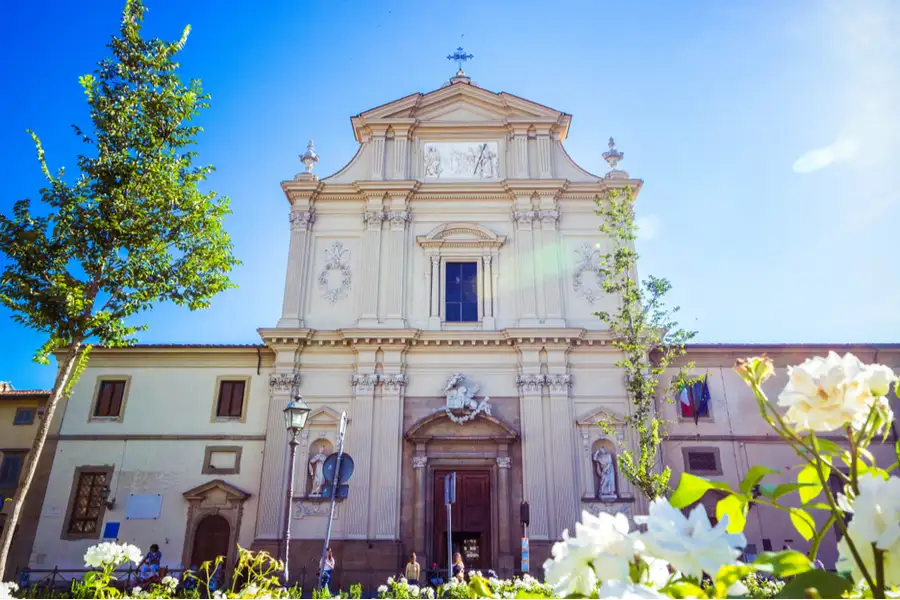
Museo di San Marco
Painting as an Act of Love: Fra Angelico in the San Marco Friary
Show More

Museo di San Marco
Painting as an Act of Love: Fra Angelico in the San Marco Friary
Show More

Museo di San Marco
Painting as an Act of Love: Fra Angelico in the San Marco Friary
Show More

Museo di San Marco
Painting as an Act of Love: Fra Angelico in the San Marco Friary
Show More

Museo di San Marco
Painting as an Act of Love: Fra Angelico in the San Marco Friary
Show More
prev
next

Day 7
Depart Florence


Museo di San Marco
 Highlight of San Marco Museum
Highlight of San Marco MuseumPainting as an Act of Love: Fra Angelico in the San Marco Friary
The crowds thin out slightly beyond the Galleria dell'Accademia, and not far beyond it rests the superlative frescos of Fra Angelico, in the Museum of San Marco. Tender, but never saccharin, gentle, but never sentimental, his paintings grace the walls of this former friary and expose another side of the Renaissance. Fra Angelico's subjects are always treated respectfully, and the breadth of facial expressions is remarkable, if subtle. With a peaceful atmosphere, and a lesser amount of people, this museum might provide the most intimate experience you will find with Renaissance masterpieces in Florence.

Museo di San Marco
 Highlight of San Marco Museum
Highlight of San Marco MuseumPainting as an Act of Love: Fra Angelico in the San Marco Friary
The crowds thin out slightly beyond the Galleria dell'Accademia, and not far beyond it rests the superlative frescos of Fra Angelico, in the Museum of San Marco. Tender, but never saccharin, gentle, but never sentimental, his paintings grace the walls of this former friary and expose another side of the Renaissance. Fra Angelico's subjects are always treated respectfully, and the breadth of facial expressions is remarkable, if subtle. With a peaceful atmosphere, and a lesser amount of people, this museum might provide the most intimate experience you will find with Renaissance masterpieces in Florence.

Museo di San Marco
 Highlight of San Marco Museum
Highlight of San Marco MuseumPainting as an Act of Love: Fra Angelico in the San Marco Friary
The crowds thin out slightly beyond the Galleria dell'Accademia, and not far beyond it rests the superlative frescos of Fra Angelico, in the Museum of San Marco. Tender, but never saccharin, gentle, but never sentimental, his paintings grace the walls of this former friary and expose another side of the Renaissance. Fra Angelico's subjects are always treated respectfully, and the breadth of facial expressions is remarkable, if subtle. With a peaceful atmosphere, and a lesser amount of people, this museum might provide the most intimate experience you will find with Renaissance masterpieces in Florence.

Museo di San Marco
 Highlight of San Marco Museum
Highlight of San Marco MuseumPainting as an Act of Love: Fra Angelico in the San Marco Friary
The crowds thin out slightly beyond the Galleria dell'Accademia, and not far beyond it rests the superlative frescos of Fra Angelico, in the Museum of San Marco. Tender, but never saccharin, gentle, but never sentimental, his paintings grace the walls of this former friary and expose another side of the Renaissance. Fra Angelico's subjects are always treated respectfully, and the breadth of facial expressions is remarkable, if subtle. With a peaceful atmosphere, and a lesser amount of people, this museum might provide the most intimate experience you will find with Renaissance masterpieces in Florence.

Museo di San Marco
 Highlight of San Marco Museum
Highlight of San Marco MuseumPainting as an Act of Love: Fra Angelico in the San Marco Friary
The crowds thin out slightly beyond the Galleria dell'Accademia, and not far beyond it rests the superlative frescos of Fra Angelico, in the Museum of San Marco. Tender, but never saccharin, gentle, but never sentimental, his paintings grace the walls of this former friary and expose another side of the Renaissance. Fra Angelico's subjects are always treated respectfully, and the breadth of facial expressions is remarkable, if subtle. With a peaceful atmosphere, and a lesser amount of people, this museum might provide the most intimate experience you will find with Renaissance masterpieces in Florence.
prev
next

What's Included In A Renaissance Frame of Mind Trip

Pre-Paid Tours and Activities:
- Half Day Excursion to San Gimignano with a driver
- Florence Sunset Food Tour
- Tuscan Cuisine Cooking Class

Pre-Paid Transportation:
- Private Transfer from Florence Airport to Hotel
- Private Transfer from Hotel to Florence Airport

Go Real Travel Mobile App:
- Itinerary Plan & Reservations Info
- Points of Interest
- Detailed Travel Information
- Maps & Directions
Other Trips You May Like

7 Days
From$2139USD

14 Days
From$3559USD

10 Days
From$4033USD
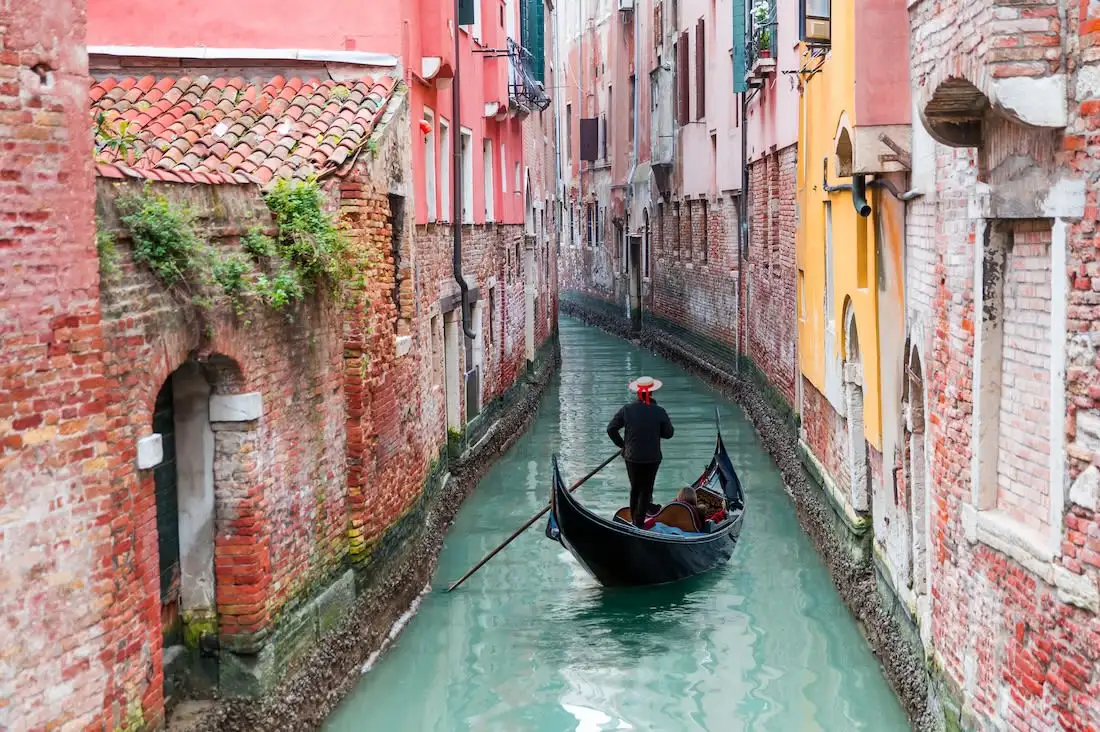
8 Days
From$2424USD

4 Days
From$949USD

7 Days
From$1815USD
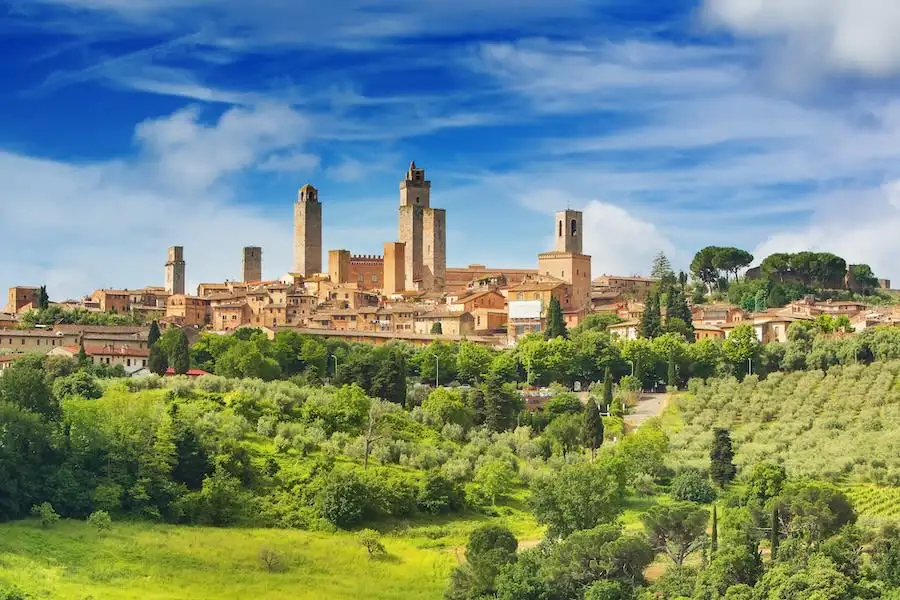
10 Days
From$2199USD
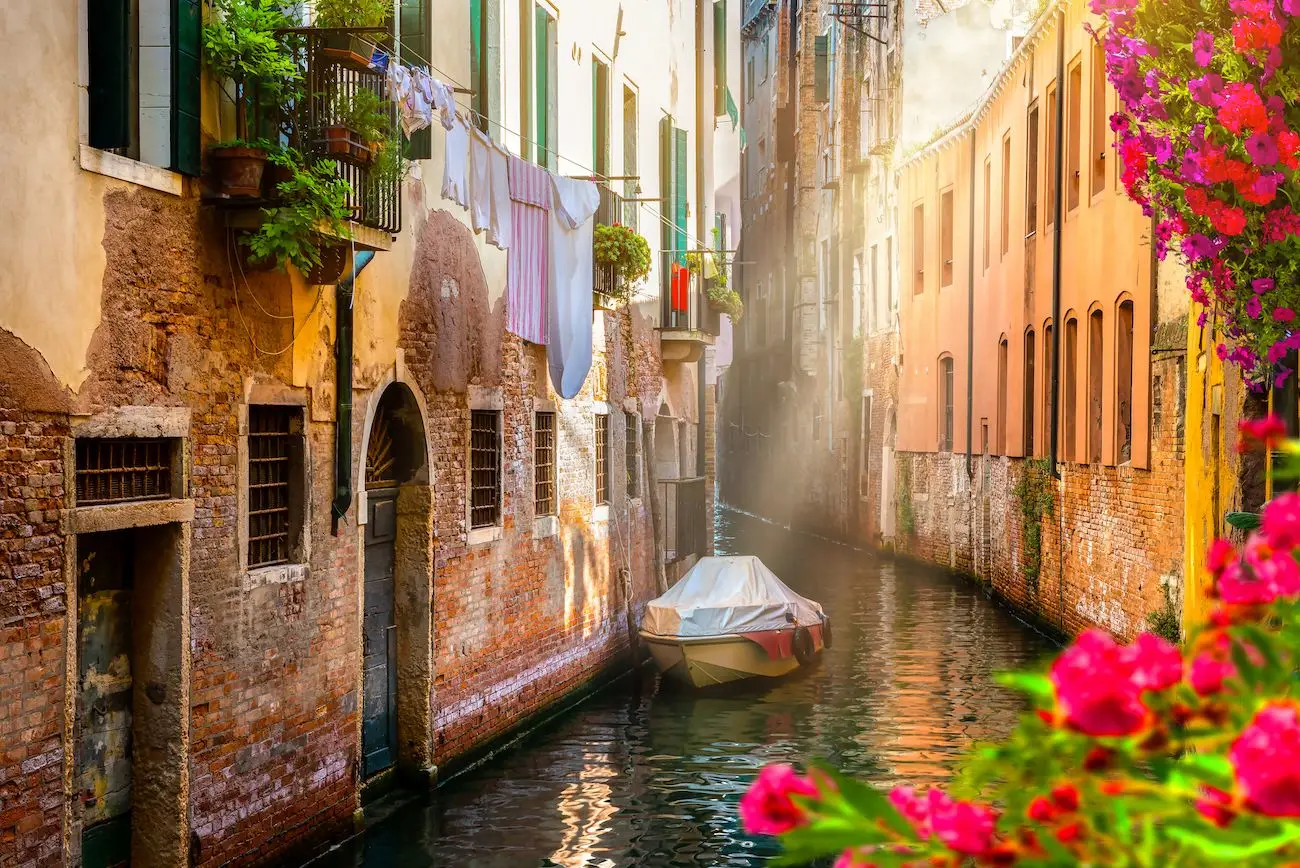
7 Days
From$2593USD

10 Days
From$2645USD
Paris, Rome, Florence: An Unforgettable 10-Day Itinerary to Europe's Most Iconic Destinations

Italy, France

7 Days
From$2139USD

14 Days
From$3559USD

10 Days
From$4033USD

8 Days
From$2424USD

4 Days
From$949USD

7 Days
From$1815USD

10 Days
From$2199USD

7 Days
From$2593USD

10 Days
From$2645USD
Paris, Rome, Florence: An Unforgettable 10-Day Itinerary to Europe's Most Iconic Destinations

Italy, France
prev
next
Featured Blogs
prev
next
Our Customers Say It Best
Marianne Strydom, Paarl, South Africa
I just wanted to thank you for organizing an amazing trip for me – I packed in so much in such a short period of time and everything was just perfect. The way you do things makes it possible to really get to know the destination, which for me as a travel agent could not have been better. 

Otto Chuy, Los Angeles, California
I am still surprised how everything worked as planned, without a hitch. All instructions in your itinerary were precise and correct. Your suggestions and comments in each of the locations we went to were very helpful. All your guides, without exception, were wonderful and exactly on time. 

Malini Dutta, Boston, Massachusetts
We can't thank you enough for the detailed plans, maps, and suggestions. It really felt that someone was holding our hands and showing us around. We had all the excitement of discovering foreign lands, with none of the problems that can happen while negotiating unfamiliar places. In fact, all the cities felt like home within a few hours of arriving and exploring. 

Bev and Mark Frankel, Williamsburg, Virginia
We could not be more pleased with Go Real Travel! You took the guess work out of things like public transport but still managed to allow us the freedom to tour as we wanted. Our guides were exceptional and every time I saw a Viking Cruise tour of 25 people, I realized the quality experience we were getting with Go Real. 

Marianne Strydom, Paarl, South Africa
I just wanted to thank you for organizing an amazing trip for me – I packed in so much in such a short period of time and everything was just perfect. The way you do things makes it possible to really get to know the destination, which for me as a travel agent could not have been better. 

Otto Chuy, Los Angeles, California
I am still surprised how everything worked as planned, without a hitch. All instructions in your itinerary were precise and correct. Your suggestions and comments in each of the locations we went to were very helpful. All your guides, without exception, were wonderful and exactly on time. 

Malini Dutta, Boston, Massachusetts
We can't thank you enough for the detailed plans, maps, and suggestions. It really felt that someone was holding our hands and showing us around. We had all the excitement of discovering foreign lands, with none of the problems that can happen while negotiating unfamiliar places. In fact, all the cities felt like home within a few hours of arriving and exploring. 

Bev and Mark Frankel, Williamsburg, Virginia
We could not be more pleased with Go Real Travel! You took the guess work out of things like public transport but still managed to allow us the freedom to tour as we wanted. Our guides were exceptional and every time I saw a Viking Cruise tour of 25 people, I realized the quality experience we were getting with Go Real. 



Explore cities in more detail

Milan
Milan is Italy’s most forward-looking city. An international center for fashion, fine dining, and design, it seems as though Milanese people breathe style. From the gleam on your wine glass to the twists of its cathedral’s spires, everything in Milan is finished to perfection. Home to the Italian stock exchange, a world-famous fashion industry, and a frantic business district, Milan is fast-paced and commercially minded. The shopping in Milan is second to none. At the Galleria Vittorio Emanuele II, one of the world’s oldest shopping malls, a glass-iron ceiling soars over brands like Louis Vuitton, Gucci, Massimo Dutti, and Amani. Along with the fashion, Milan’s cathedral, castle, and canals are also must-sees. But to view the city’s most prized possession - Leonardo da Vinci’s Last Supper, you must make an appointment. Tickets to view this mural sell out weeks in advance. It is truly a bucket-list worthy work of art. After a day taking in all the glamor and culture, take a seat in one of Milan’s well-appointed eateries. The Navigli Quarter is packed with restaurants, bars, and cafes, perfect for a relaxed Aperol spritz or pizza along the city’s canals.

Learn About Milan
Build Milan Trip
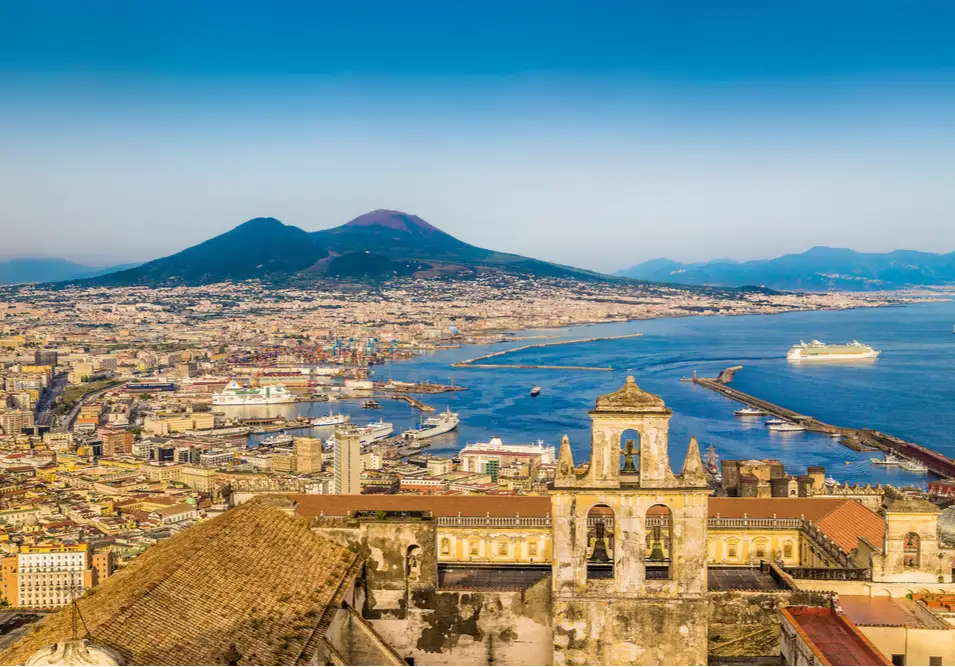
Naples
Gritty and chaotic Naples calls to travelers who want to experience the real Italy. Pressed along the coast of Campania, hilly Naples is jammed with maze-like streets, strung with outdoor clotheslines, descending toward the sea below. A much deserved UNESCO World Heritage site, Naples is famous for its churches, museums, castles, and catacombs. As you navigate the city, you’ll find yourself immersed by its culture and history. You can easily occupy a full day gazing at churches like the Naples Cathedral, San Francesco di Paola, and Cappella Sansevero. If you cast your eyes toward the Gulf of Naples, you’ll see Mount Vesuvius looming over the harbor. This foreboding volcano erupted in AD 79. Not far from the inner city — less than an hour by train — you’ll find the ancient town of Pompeii, its dramatic ruins still preserved in ash from the eruption. One of the best things you can do in Naples is to eat. This is the city where pizza was born. Propped up by its ripe tomatoes, local cheeses, and fresh fish, food from Naples has come to define what many see as the height of Italian cuisine. Everything you taste in Naples seems like a delicacy. Authentic and vivid, Naples is a true Italian city where the ancient world meets the modern-day with a bang.

Learn About Naples
Build Naples Trip
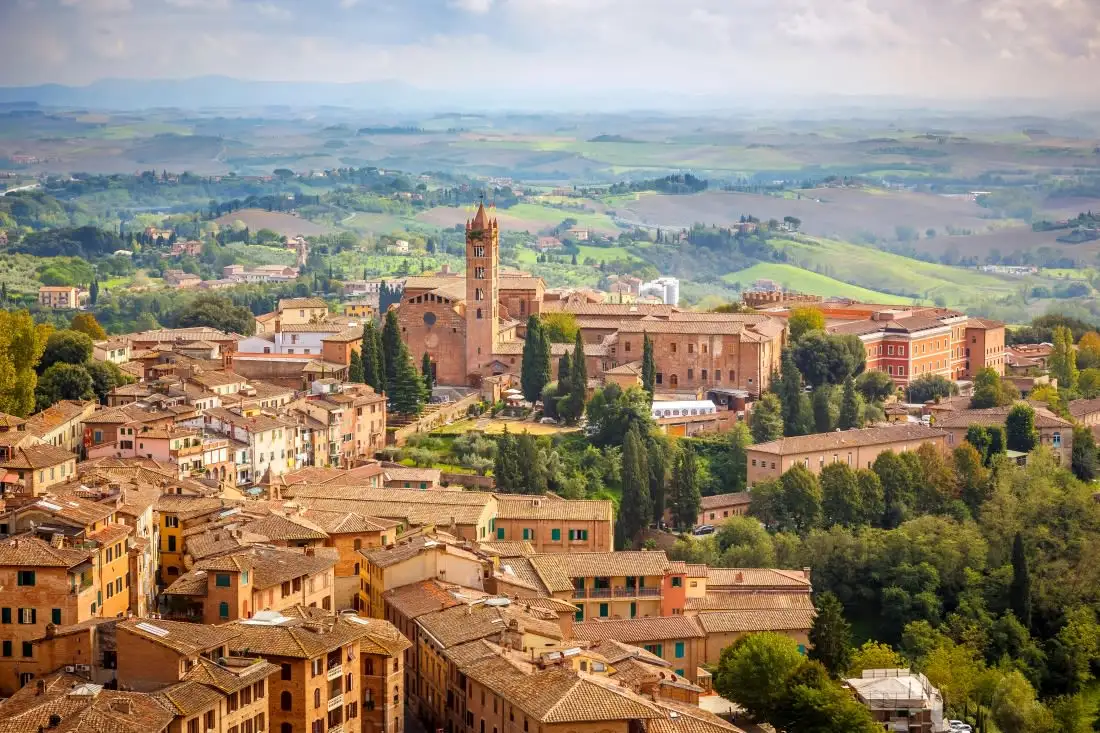
Siena
Tucked into the golden hills of Tuscany, Siena is a city where time slows, and the echoes of a medieval past whisper through every cobblestone street. Just an hour south of Florence, this enchanting city is a tapestry of Gothic spires, sun-dappled piazzas, and timeless traditions. Life centers around the breathtaking Piazza del Campo, where the gentle hum of conversation mingles with the thrill of the Palio, Siena’s legendary horse race that ignites the city with passion twice a year. Wander through Siena’s narrow, labyrinthine alleys, where stone walls seem to hold centuries of secrets, and vibrant flags of the city’s contrade flutter in the breeze. Marvel at the intricate beauty of the Duomo, a cathedral so stunning it feels like stepping into a masterpiece. Siena is not just a place to visit—it’s a city to savor, to feel, and to lose yourself in its soul-stirring atmosphere.

Learn About Siena
Build Siena Trip
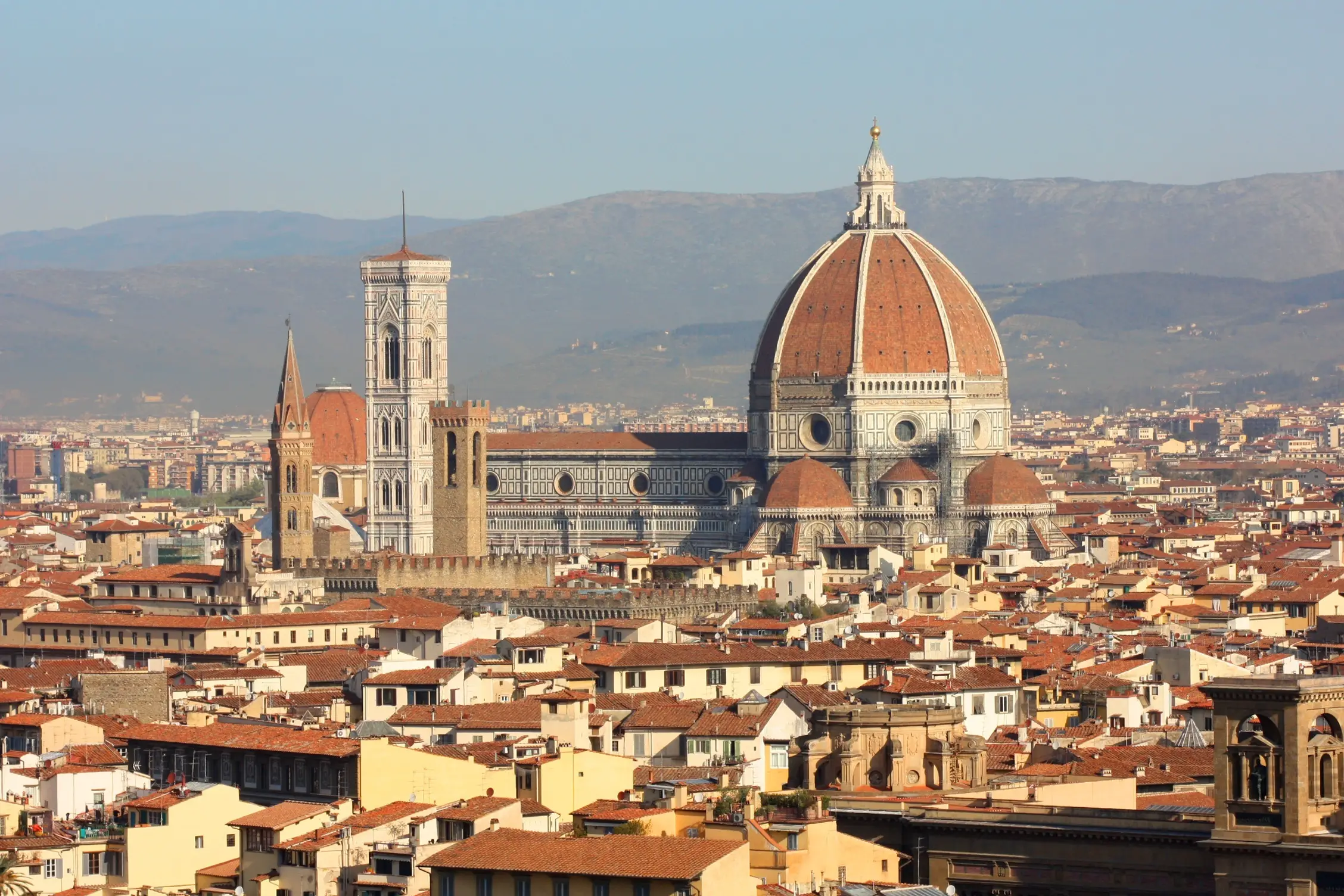
Florence
Culture and history are thick in the air in Florence. Located on the banks of the Arno River in Tuscany, Florence’s past is deeply compelling. The birthplace of the Renaissance, Florence is where innovators like Dante, Machiavelli, Michelangelo, and Da Vinci made their fortunes. Centuries of art, politics, and commerce have left their mark on every stone in this Northern Italian city. In the 15th and 16th centuries, Florentine banks funded new enterprises that went on to change the history of the world. Powerful families like the Medici’s financed some of the finest art in history and pioneered new ways of doing statecraft and politics. As you stand in the Piazzale Michelangelo and gaze upon the city below it’s hard to take it all in at once. It feels like behind every door in Florence might hide a work of genius. Michelangelo’s David and Botticelli’s Primavera can be found just a short walk away. After a long day wandering the streets and gazing at art, fueled by exquisite coffee and gelato, relax like the locals do: with a glass of some of the best wine in the world.

Learn About Florence
Build Florence Trip
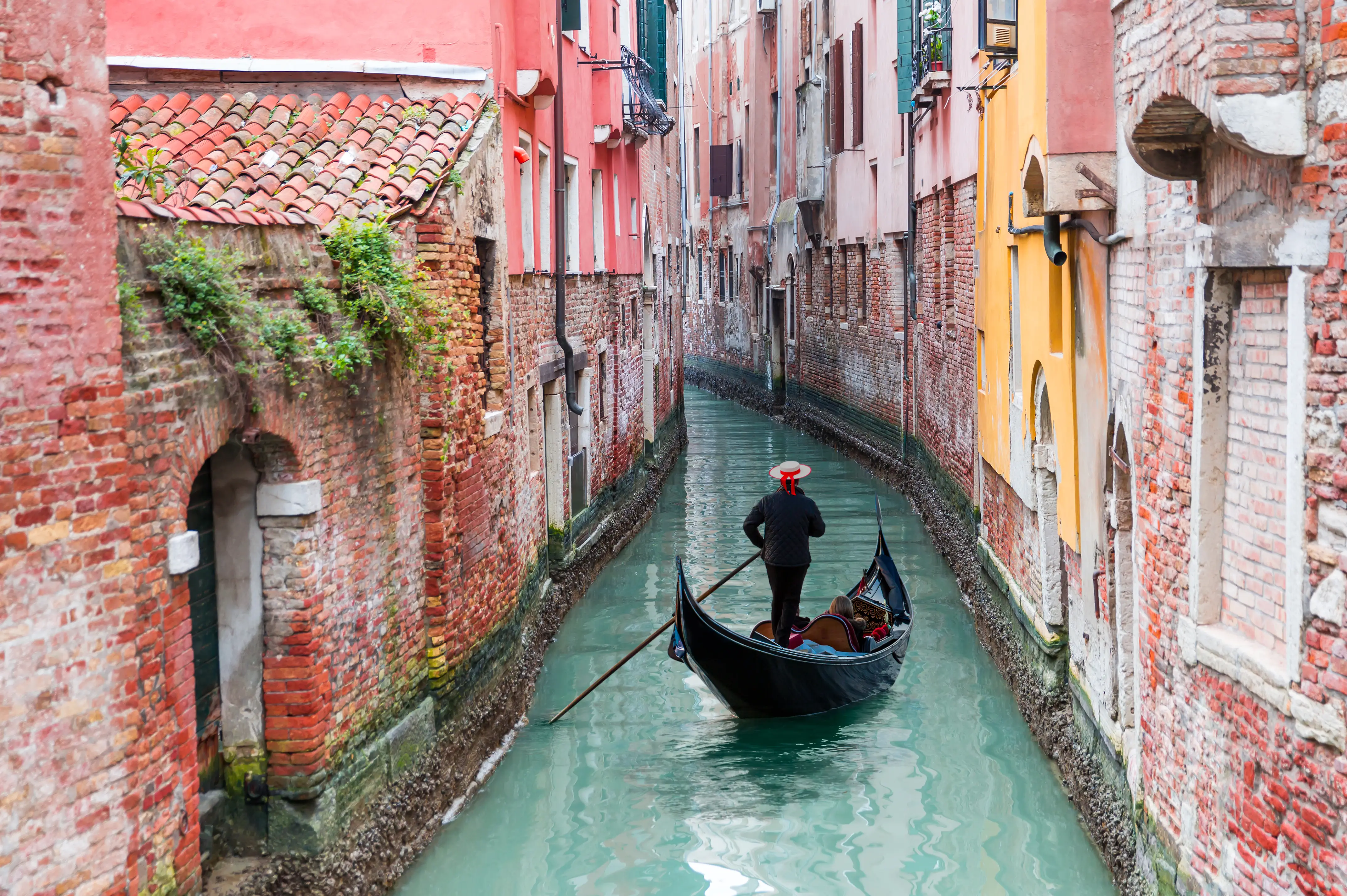
Venice
Venice is a city with no equal. Built on a series of islands on a lagoon, it was once a powerful city-state. Echoes of that old magnificence can be seen everywhere here, from the stunning buildings that rise out of the canals, to the bridges that arc across them. Take a Gondola ride through the canals that form the city’s veins, or wander through the winding streets drinking in the sights. You’ll see Venice attracts tourists in huge numbers, and that’s with good reason. It’s home to a seemingly limitless amount of art, culture, history, and architecture. St Mark’s Basilica, the Doge’s Palace, and the Campanile di San Marco just barely scratch the surface. There’s a 700-year-old market, Rialto, which is still open today. The Ponte di Rialto bridge connects the neighborhoods of San Marco and San Polo, stretching across the Grand Canal. Venice has weathered the last several centuries with elegance and pride, a place that will surpass even your highest expectations.

Learn About Venice
Build Venice Trip

Rome
One of the must-sees of Italy, and indeed all of Europe, Rome is a city with history flowing through its veins. There is an endless amount to see, do, and learn here, with something for every taste and disposition. Rome was the center of Western civilization for a Millenium and during that time, accumulated a list of historical and cultural treasures that no other destination can truly match. The Pantheon, Colosseum, Roman Forum, and Cirus of Maxentius are just a few examples of what can be seen and experienced in Rome, which at times feels more like a giant outdoor museum than a city. At Rome’s heart, you’ll find the Vatican, home of the Roman Catholic Church and the Pope. Here visitors can see the legendary Sistine Chapel. Transcending a mere building, the chapel is a walk-in work of art. Although historical sights can be found on just about every corner, it’s entirely possible to fill a day just wandering around Rome. The city’s charming streets and open Piazzas are filled with beautiful sights and places to sit, grab the best Cappuccino in the world, and enjoy the view.

Learn About Rome
Build Rome Trip

Milan
Milan is Italy’s most forward-looking city. An international center for fashion, fine dining, and design, it seems as though Milanese people breathe style. From the gleam on your wine glass to the twists of its cathedral’s spires, everything in Milan is finished to perfection. Home to the Italian stock exchange, a world-famous fashion industry, and a frantic business district, Milan is fast-paced and commercially minded. The shopping in Milan is second to none. At the Galleria Vittorio Emanuele II, one of the world’s oldest shopping malls, a glass-iron ceiling soars over brands like Louis Vuitton, Gucci, Massimo Dutti, and Amani. Along with the fashion, Milan’s cathedral, castle, and canals are also must-sees. But to view the city’s most prized possession - Leonardo da Vinci’s Last Supper, you must make an appointment. Tickets to view this mural sell out weeks in advance. It is truly a bucket-list worthy work of art. After a day taking in all the glamor and culture, take a seat in one of Milan’s well-appointed eateries. The Navigli Quarter is packed with restaurants, bars, and cafes, perfect for a relaxed Aperol spritz or pizza along the city’s canals.

Learn About Milan
Build Milan Trip

Naples
Gritty and chaotic Naples calls to travelers who want to experience the real Italy. Pressed along the coast of Campania, hilly Naples is jammed with maze-like streets, strung with outdoor clotheslines, descending toward the sea below. A much deserved UNESCO World Heritage site, Naples is famous for its churches, museums, castles, and catacombs. As you navigate the city, you’ll find yourself immersed by its culture and history. You can easily occupy a full day gazing at churches like the Naples Cathedral, San Francesco di Paola, and Cappella Sansevero. If you cast your eyes toward the Gulf of Naples, you’ll see Mount Vesuvius looming over the harbor. This foreboding volcano erupted in AD 79. Not far from the inner city — less than an hour by train — you’ll find the ancient town of Pompeii, its dramatic ruins still preserved in ash from the eruption. One of the best things you can do in Naples is to eat. This is the city where pizza was born. Propped up by its ripe tomatoes, local cheeses, and fresh fish, food from Naples has come to define what many see as the height of Italian cuisine. Everything you taste in Naples seems like a delicacy. Authentic and vivid, Naples is a true Italian city where the ancient world meets the modern-day with a bang.

Learn About Naples
Build Naples Trip

Siena
Tucked into the golden hills of Tuscany, Siena is a city where time slows, and the echoes of a medieval past whisper through every cobblestone street. Just an hour south of Florence, this enchanting city is a tapestry of Gothic spires, sun-dappled piazzas, and timeless traditions. Life centers around the breathtaking Piazza del Campo, where the gentle hum of conversation mingles with the thrill of the Palio, Siena’s legendary horse race that ignites the city with passion twice a year. Wander through Siena’s narrow, labyrinthine alleys, where stone walls seem to hold centuries of secrets, and vibrant flags of the city’s contrade flutter in the breeze. Marvel at the intricate beauty of the Duomo, a cathedral so stunning it feels like stepping into a masterpiece. Siena is not just a place to visit—it’s a city to savor, to feel, and to lose yourself in its soul-stirring atmosphere.

Learn About Siena
Build Siena Trip

Florence
Culture and history are thick in the air in Florence. Located on the banks of the Arno River in Tuscany, Florence’s past is deeply compelling. The birthplace of the Renaissance, Florence is where innovators like Dante, Machiavelli, Michelangelo, and Da Vinci made their fortunes. Centuries of art, politics, and commerce have left their mark on every stone in this Northern Italian city. In the 15th and 16th centuries, Florentine banks funded new enterprises that went on to change the history of the world. Powerful families like the Medici’s financed some of the finest art in history and pioneered new ways of doing statecraft and politics. As you stand in the Piazzale Michelangelo and gaze upon the city below it’s hard to take it all in at once. It feels like behind every door in Florence might hide a work of genius. Michelangelo’s David and Botticelli’s Primavera can be found just a short walk away. After a long day wandering the streets and gazing at art, fueled by exquisite coffee and gelato, relax like the locals do: with a glass of some of the best wine in the world.

Learn About Florence
Build Florence Trip

Venice
Venice is a city with no equal. Built on a series of islands on a lagoon, it was once a powerful city-state. Echoes of that old magnificence can be seen everywhere here, from the stunning buildings that rise out of the canals, to the bridges that arc across them. Take a Gondola ride through the canals that form the city’s veins, or wander through the winding streets drinking in the sights. You’ll see Venice attracts tourists in huge numbers, and that’s with good reason. It’s home to a seemingly limitless amount of art, culture, history, and architecture. St Mark’s Basilica, the Doge’s Palace, and the Campanile di San Marco just barely scratch the surface. There’s a 700-year-old market, Rialto, which is still open today. The Ponte di Rialto bridge connects the neighborhoods of San Marco and San Polo, stretching across the Grand Canal. Venice has weathered the last several centuries with elegance and pride, a place that will surpass even your highest expectations.

Learn About Venice
Build Venice Trip

Rome
One of the must-sees of Italy, and indeed all of Europe, Rome is a city with history flowing through its veins. There is an endless amount to see, do, and learn here, with something for every taste and disposition. Rome was the center of Western civilization for a Millenium and during that time, accumulated a list of historical and cultural treasures that no other destination can truly match. The Pantheon, Colosseum, Roman Forum, and Cirus of Maxentius are just a few examples of what can be seen and experienced in Rome, which at times feels more like a giant outdoor museum than a city. At Rome’s heart, you’ll find the Vatican, home of the Roman Catholic Church and the Pope. Here visitors can see the legendary Sistine Chapel. Transcending a mere building, the chapel is a walk-in work of art. Although historical sights can be found on just about every corner, it’s entirely possible to fill a day just wandering around Rome. The city’s charming streets and open Piazzas are filled with beautiful sights and places to sit, grab the best Cappuccino in the world, and enjoy the view.

Learn About Rome
Build Rome Trip
prev
next


 Map of Your Itinerary Route
Map of Your Itinerary Route
Zoom In to the cities to see your itinerary in more detail


 4.8
4.8 
